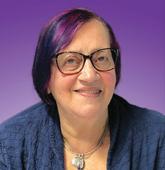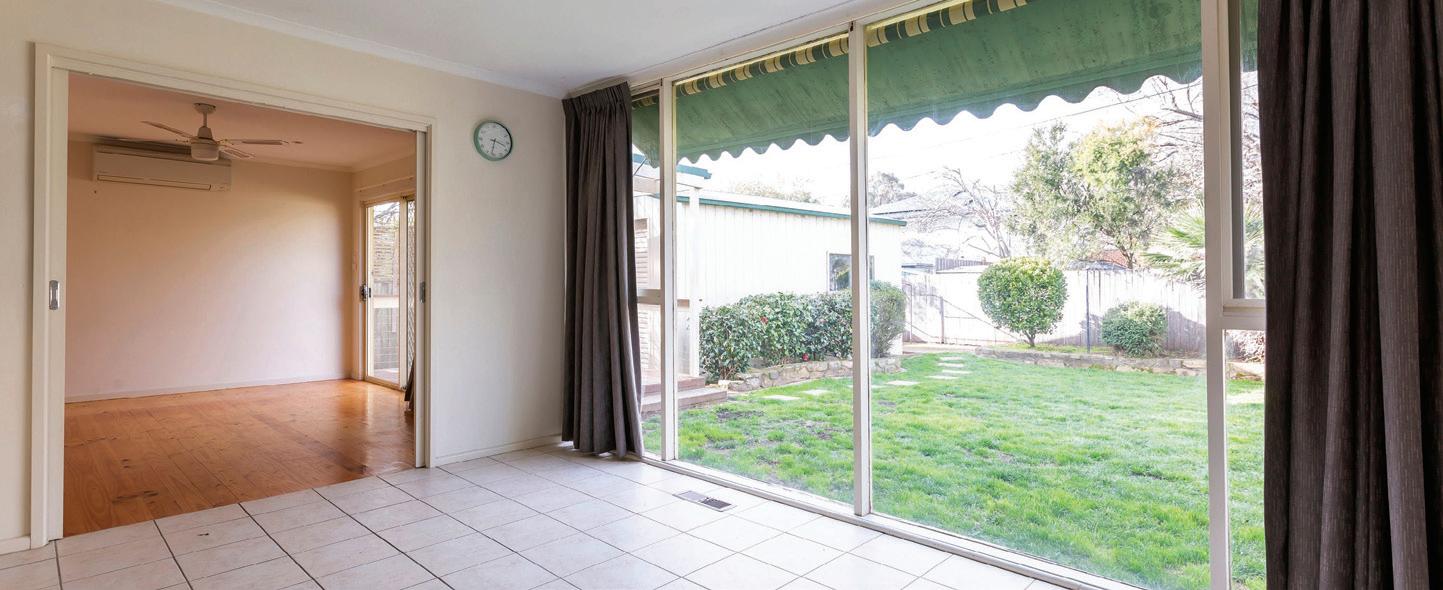














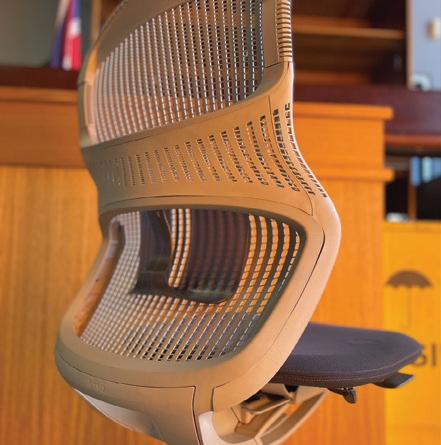







































Dubbo and Barkindji from Bourke, was kicked out of school in year nine, told she was just wasting her principal’s time.
“I guess after that I was trying to figure out where I fit, and it was really hard,” she says.
“My parents had divorced, I wasn’t sure where I was going or what I was doing, so then I got into trouble with the police, drugs and alcohol, and my life began spiralling out of control.
“My whole concept was that if I got to 12.05pm I didn’t have a drinking problem. I’d sleep late into the morning, get up just before lunchtime, have something to eat and start again, and I told myself it wasn’t a problem.
“Then one day, I was standing in the lounge room, and my son – he was about nine-years-old then –looked at me, and the look on his face clearly said: ‘Who are you, what have you done with my mother?’ and that was the moment I knew that I needed to do something.”
Her son, now 33, is in Dubbo looking after Karen’s mother, as Karen, 53, is celebrating her win as the 2023 ACT Woman of Spirit.

“It’s the first award I’ve ever won,” she says.
“I’m so passionate about what I do now, because I know the impact that it can have and obviously there are more people who are needing help.
“Winning, for me, was the coolest thing, next to so many other brilliant women. We don’t do what we do for recognition, but it’s great when we get it. When they read out my name I started laughing, I was not expecting it and I had no speech written.”
Karen’s continuing to build her own business, to help others in a way she wished she’d been helped all those years ago.
“I became what I had to leave town for all those years ago,” she says.
“When I left town I quit my addictions and went cold turkey. It was the worst two weeks of my life, it nearly killed me. Now I have no cravings, I haven’t touched anything since, it’s just something I have incorporated into my life.”
When Karen first started her business, it was called the Trauma, Leadership, Mental Health and Coaching Institute.
“I know that when you’re in the midst of it, you don’t realise how bad it is,” she says.
“And I’m thankful for my son every day, because I’d have been dead.
“These options for help now, what I am doing, is for my grandkids that aren’t even here yet.”
Once Karen got clean, she began study, which led to a Cert I, II, III and IV, two diplomas, a grad certificate on indigenous trauma and recovery practice, a masters in health, and a PhD in “Women Conversations, Yarning, Connection”.

“It really shows people that there’s possibilities,” she says.

“It’s been a hard slog but it’s been well worth it. What I do now is really about helping people to figure out why they do what they do, because once you know, then you can change it.
“My father passed away on January 1, and the name of his company was Burbirra Boomerangs. He was the only person I knew that had run a business.
“So, when he passed away, I was looking for a change in my business, and the word burbirra means working with wood.”
Karen says it’s now very much a legacy.
“I’d heard a saying which just completely hit me too, in that we
General manager: Tracey Avery, tracey@citynews.com.au
Senior advertising account executive: David Cusack, 0435 380656
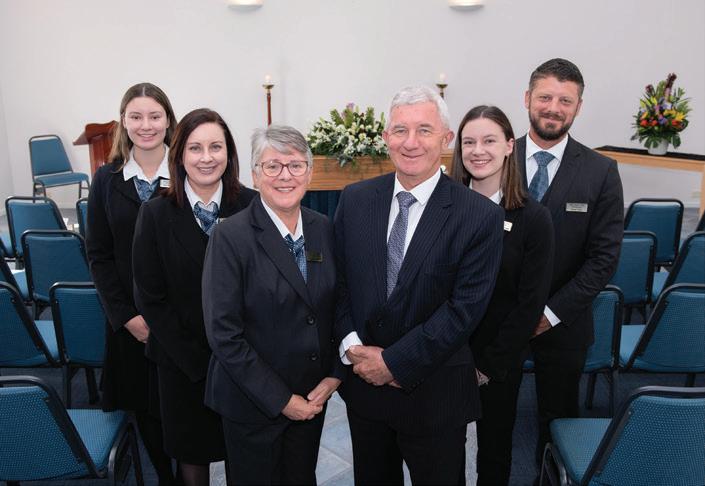
Advertising account executives: Damien Klemke, 0439 139001
Tim Spare, 0423 381691

Editor: Ian Meikle, editor@citynews.com.au
Journalist: Lily Pass, lily@citynews.com.au
Arts editor: Helen Musa, helen@citynews.com.au

Production manager: Janet Ewen
Graphic Designer: Mona Ismail
Proof reader: Glenda Anderson
Distribution manager: Penny McCarroll penny@citynews.com.au
plant seeds that grow and sprout shade that people will sit under, that we will never get to see,” she says.
“That’s the legacy that I want to leave, it’s going to impact people well after I’m gone.”
Karen says if people take one piece of advice from her, it’s to figure out what makes your heart happy, and do more of that.
“When I was going through my healing and Brian, my husband, would ask me what I’d want for dinner, I couldn’t even answer,” she says.
“I had been through so much and made all sorts of choices and decisions, I didn’t trust myself any more.”
Karen says she is confident in herself now, and her go-to dinner options (butter chicken).

She is also confident in saying she loved pink way before it was cool.
“The Trauma, Leadership, Men tal Health and Coaching Institute had very earthy colours, so when I changed to Burbirra I chose to embrace me, and if you don’t like it, too bad,” she says.
“Everything’s pink, and people love it, and importantly, it makes my heart happy. So, it was really about stepping into that comforta bleness and living my values.”
2023-24 budget revised this forecast to a deficit of $989.7 million, that is it blew out by more than $300 million and along with the territory forecast of the annual borrowings required to pay the interest on its debt over the forward estimates, seems to have been the trigger for
The ratio of tax-supported debt to operating revenues measures debt relative to revenue rather than the size of the economy, contrary to what the government has been reporting.
FOR years now we have warned about the ACT’s precarious budget position, including in particular, the massive increase in debt.

In a series of articles mid-last year we examined the ACT’s operating budget and key debt metrics over the last two decades and expressed serious concern about the trend deterioration in the territory’s finances since 2012-13.
We concluded that “if the ACT government doesn’t refrain from further debt accumulation, a rating downgrade is inevitable.”
And now the ratings agency Standard & Poor’s (S&P Global) has downgraded the ACT’s credit rating from the coveted AAA to AA+, which comes as no surprise.
However, it is deeply concerning both for its implications for Canberra residents, as well as the apparent indifference of the Chief Minister and Treasurer, Andrew Barr, and Treasury officials to such a predictable and obvious outcome.

A “AAA” credit rating is not merely a token, and maintaining it is not an end in itself. However, a rating downgrade is a clear signal to lenders that the risk of lending to an entity
suffering such a downgrade has increased, which inevitably results in higher interest costs.
Typically, this occurs when the level of debt exceeds certain limits. If, therefore, the ACT government does not respond with appropriate policy changes, debt will accumulate at an even faster rate with further downgrades again inevitable.
The only obvious policy changes open to the government are, of course, to either increase taxation or cut expenditure (services), or both. For this reason, maintaining a “AAA” credit rating has been one of the financial policy objectives of every ACT government since self-government – that is, other than the Barr government.
For Canberra residents, most particularly the less well off, the loss of the “AAA” rating has real consequences. The burden of the ACT government’s taxation measures is not distributed progressively, impacting disproportionately on people on low-to-moderate incomes. For example, cuts in health care are particularly inequitable.

The ratings downgrade is irrefutable evidence that the fiscal strategy adopted by the ACT government is flawed. Maintaining a “AAA”
government was accruing, provided an insight into his fiscal strategy when he advised that as the economy grows over time, the value of debt relative to the size of the economy will decline.
In other words, the treasurer advised that the problem will solve itself.
That advice is, of course, flawed. It’s a question of simple maths that if debt is rising faster than the growth rate of the economy, then debt as a proportion of the economy will continue to rise.
Indeed, the 2021-22 Budget Review, published under the authority of Mr Barr, forecasts the debt to GSP ratio will increase from 18 per cent in 2020-21 to 24 per cent in 2024-25.
We have assumed that the Budget Review forecast is correct and that Mr Barr had, it seems, been poorly briefed. Extraordinarily, however, a senior Treasury official told a Legislative Assembly Committee, at roughly the same time, that the Treasury was “not losing any sleep” over rising debt.
It is not unfair to suggest that they, and the treasurer, have nevertheless been asleep at the wheel and blissfully unconcerned about losing the “AAA” rating, which they must surely have known would happen.
We have no particular insight into the workings of S&P’s assessment; however, the following reported comments provide some interesting clues when they say: “The downgrade reflects the territory’s slower fiscal recovery from the pandemic than we expected. ACT’s after-capital account balance is larger, and its ratio of tax-supported debt to operating revenues is much higher, than those for all ‘AAA’ rated peers globally.”
S&P is clearly concerned that the oft promised improvement in the ACT budget has not occurred and it has clearly not been persuaded by Mr Barr’s regular assurances that the budget is on the mend.
Notably, it refers to two metrics, which ostensibly, among other considerations, are the crux of its decision – the “after-capital account balance” and “tax supported debt to operating revenue”.
The after-capital account balance reflects the cash available, or required, as the case may be, after taking into account operating and capital expenditure requirements.
The extent of a deficit reflects the amount that needs to be borrowed. In the 2022-23 budget, the cash deficit forecast for 2023-24 was $688.3 million, an improvement on the then forecast 2022-23 result. However, the
This measure appears to be more stringent in that it uses debt that must be paid from operating revenues (excluding commercial
The S&P assessment of the state of the ACT budget compared to other “AAA” rated entities globally suggests that the rating downgrade imposed on the ACT should have occurred earlier. Again, it is difficult to believe that neither the treasurer or the ACT Treasury were unaware of S&P’s calculus.

In seeking to defend his management of the budget in the face of the ratings downgrade, Mr Barr highlighted increased spending on pandemic support measures and other public health, cost-of-living and housing initiatives. We do not accept that these excuses have any merit.
The genesis of the ACT’s budgetary problems is the unbroken string of deficits and the exponential increase in debt since Mr Barr became Treasurer in 2011.
The ACT is also the only Australian jurisdiction not to have posted a surplus in the decade from 2012. In addition the ACT has posted the highest average deficit in Australia during that period.
In fact, S&P is reported to have observed that the ACT’s debt to operating revenue ratio had reached 93 per cent by 2018-19 (ie, before the pandemic). In that year, according to the national accounts, the ACT had a cash deficit of $1.065 billion.
Mr Barr has also claimed: “The government’s choice is to invest now, with a clear longer-term fiscal strategy to progressively improve the operating cash position and fully fund our superannuation liability. We know this supports intergenerational equity in our community”.
The statement, with its curious reference to “intergenerational equity”, is presumably aimed at appeasing the ALP’s coalition partner, the Greens.
Unfortunately, Mr Barr is again using an inappropriate measure in referencing intergenerational equity. While operating cash is important, it’s the after-capital balance – S&P’s statement provides a clue here – that determines the borrowings, the rate at which debt grows and debt servicing capacity.
We have previously observed that a Canberra child in primary school today will be repaying the debt accumulated by the ACT government over the last decade, well into their retirement.
That assessment was based on an assumption that the after-capital account, to use the S&P’s terminology, is not just in balance but in surplus. It is currently forecast to be in deficit every year to 2026-27. The Treasurer’s “strategy” will, therefore, bequeath even that child’s offspring with responsibility for paying off his debt.

“Maintaining a ‘AAA’ credit rating has been one of the financial policy objectives of every ACT government since self-government – that is, other than the Barr government.” JON STANHOPE & KHALID AHMED look at the costly effects of the ACT’s credit-rating downgrade.Jon Stanhope is a former chief minister of the ACT and Dr Khalid Ahmed a former senior ACT Treasury official.
The genesis of the ACT’s budgetary problems is the unbroken string of deficits and the exponential increase in debt since Mr Barr became Treasurer in 2011.
IS the Labor-Greens coalition and their “Parliamentary and Governing Agreement”

According to the agreement, the coalition has been “built on trust, mutual respect and our many shared values and goals”.
However, actions speak louder than words. For “stable government” the parties have agreed to “guarantee support for the passage of Appropriation Bills” as the legislative support for the government’s budget. Unless you are Greens backbencher Jo Clay where stable government and the agreement come in last.





Ms Clay objects to the $41 million horse racing industry government subsidy. And, she has the support of the other elected Greens.
Opposing a budget can be seen as a no-confidence motion in the Westminster system. The thinking is that if a government does not have the support of the parliament for expenditure, it does not have the numbers to govern effectively. The concern of this precedent is that if one part of a budget can be amended, why not any other part that a backbencher dislikes?
There was a similar stoush



Minister Chris Steel, who had signed the agreement with the horseracing industry, attacked the Greens as pulling a ‘political stunt’. Hardly the stuff of a coalition ‘built on trust and mutual respect’.
to reduce expenditure. It is about consistency in the agreement that they have signed with Labor. It turns out they are not saddled with the “guarantee support for the passage of Appropriation Bills”.

to “out progressive each other”. He pointed out that racing returned $32 million to the ACT and rather than “the sport of kings” is the sport of “minimum-wage battlers who do not hold the skills to be employed in other areas”.
office. He argued that only Labor and Liberals went to the election with a clear policy on this issue.
Hardly the stuff of a coalition “built on trust and mutual respect”.
regarding interfering with budgets by crossbenchers in 1994 resulting in an Assembly inquiry that verified only a Minister can propose expenditure. The doubt was whether a backbencher could “reduce” expenditure.
This was clarified in late 1995 and can be found in Standing Order 201A, which supports the Westminster Principles about increasing expenditure. However, it includes the phrase “other than those to reduce items of proposed expenditure”.



Criticism of the stance taken by the Greens is not about standing orders and an MLA’s prerogative to seek
The Labor-Greens coalition has supported a 2022 MOU with the racing industry and the cabinet has voted for the financial support. However, last year Ms Clay attempted to move a reduction of this funding by 20 per cent. This year she has upped the ante to a 40 per cent reduction.

According to Ms Clay: “We would like to amend the budget on this one line item. But if we are not successful in this amendment, we will of course support the budget”.
This sounds like an each way bet.
Liberal MLA Mark Parton defended the subsidy for the horse racing industry as minor compared to other jurisdictions. He attacked the Labor-Greens coalition as attempting
He was responding to the substantial arguments Ms Clay presented about why the expenditure ought not proceed. These included, the MOU is not transparent, the level of subsidy is not consistent with payments to other sporting codes, and there was no scrutiny or apparent tender or other process to determine the amount of the grant. She argued that the revenue raised (including through gambling) is very minor compared to the grant.
She argues the “social licence” of the horse racing industry has run out. “We’re a progressive bunch here in the ACT and we’ve had enough,” and she believes she has the support of a “whopping 74 per cent of Canberrans”.
Minister Chris Steel, who had signed the agreement, attacked the Greens as pulling a “political stunt”. He pointed out that the Greens had not consulted with the clubs nor his
The expenditure through until 2027, in his opinion, was to “better regulate the industry” and added, “these proposed amendments would cripple our local racing industry” and “come at the cost of jobs, trust and integrity”.
The Greens motion was defeated by Labor and the Liberals. Many Canberrans would be happy with the cut to expenditure proposed by Jo Clay. If the racing industry crashes, Labor and the Greens would be chafing at the bit to access the huge amount of land right next to the tram for urban infill.
Michael Moore is a former member of the ACT Legislative Assembly and an independent minister for health. He has been a political columnist with “CityNews” since 2006.


THE ACT government will spend up to $80,000 on a pilot program in two suburbs to involve the community in the “suburban project development participatory democracy process”. The government said residents in Page and Richardson could participate in the “My Little Big Idea” program. Up to $40,000 was available to each suburb. One winning idea per suburb would receive funding. Community members would determine which idea would receive funding through a community panel and public vote later in the year. More at yoursay.act.gov.au



THE Southern Tablelands Group of the Country Women’s Association of NSW is offering grants/scholarships.The group is offering $250 to year 6 students entering year 7 in 2024. Eligible applicants must live in the Southern Tablelands Group area. Applications close on October 10 and forms are available via email to stgcwa. educgrants@gmail.com


There was a typographical error in Jon Stanhope’s column last week. It should have read: “The crude rate of imprisonment of Aboriginal men in the ACT in 2022 was 3024.3 compared to a non-indigenous rate of 152.4”.
























Who wouldn’t agree to trees that offer shade in the summer and light in the winter? Well, not the intransigent ACT Heritage Council, which is insisting owners of a north-facing apartment block in Downer plant tall pines and not deciduous trees. Owners JOHN GODWIN and ROBYN SIRR describe the nightmare of getting anyone to listen to them…
AS owner in an apartment complex in the heritage precinct of the former Council for Scientific and Industrial Research Experimental Station in Downer, we are agitating to replace inappropriate Canary Island pine trees, planted at the behest of the Heritage Council.
The council, during the development application process, stipulated that if heritage-listed trees had to be removed during construction, then they had to be replaced, like-for-like.
Two rows of closely planted, evergreen sapling pine trees, in windbreak formation, have been planted in front of a north-facing building in the complex.

“North-facing” is the first commandment of buying and building in Canberra. Thirty-eight apartments will now be denied the benefits of passive solar access in winter, leading to increased energy consumption and significantly decreased sunlight.
The council, and planners, have
ignored the fact that other heritagelisted trees in this precinct have been removed and not replaced, and that Canary Island pines are deemed by the ACT government to be unsuitable for urban street planting.
Our Kurrajong members of the Legislative Assembly include Andrew Barr, Minister for Climate Action; Shane Rattenbury, Minister for Water, Energy and Emissions Reduction; and Rebecca Vassarotti, Minister for the Environment and Minister for Heritage.
All have a responsibility for climate-change leadership. In this case, leadership was left to Minister Vassarotti. She claims she is unable to intervene in Heritage Council decisions, although subsequently, she sacked the former Heritage Council, with one issue being, “The Council lacks a unified direction and understanding of their strategic outlook and processes.”
Given no right to appeal, we turned to Kurrajong representative, the Leader of the Opposition Elizabeth
e-petition to the Legislative Assembly. We collected 580 signatures, territory wide, to a petition seeking two rows of appropriate deciduous trees to replace the windbreak of pine saplings. The petition was tabled, and referred to an Assembly standing committee. We provided a comprehensive brief to the committee and requested an audience.
The petition was summarily dismissed in favour of Minister Vassarotti’s report, and an anticipated report from the Commissioner for Sustainability and the Environment. That report was not available until six weeks after the committee had made its decision.

The commissioner’s report vindicated our concerns. It includes this observation: “In light of the
the world is facing, it is essential that sustainability outcomes are prioritised in the planning system. The exclusion of climate change and sustainability from decisions relating to heritage management in the ACT is a systemic issue which is likely to result in adverse outcomes for the environment and sustainability”.
The commissioner also noted a lack of evidence to indicate that heritagelisted trees in the precinct had been managed in accordance with the Heritage Act, and noted that the then manager – Urban Treescapes, advised in 2017: “If removal and replacement of the pine trees goes ahead, I’d strongly suggest that an alternative deciduous exotic replacement species is used.” The government is not obliged to respond to the taxpayer-
funded commissioner’s report.
With the benefit of the commissioner’s report, we have made further representations to the Chief Minister and the Minister for Heritage, but the lines have dropped out. Given the ACT Climate Change Strategy 2019-2025, and the repeated political emphasis on “climate crisis”, we are critical that the Heritage Council and the government have chosen to ignore climate-change mitigation, the change in land use from rural to urban, and advances in sustainable urban design.
We have a simple solution. There are 400 metres of remaining heritagelisted trees; use the pine saplings to replace those trees that have been removed and not replaced, and to replace those trees that are dying.
Lest readers get the impression that we think responsibility for leadership lies entirely with the government, the owners in this new apartment complex have installed a 68Kw rooftop solar panel array, are proposing to install an EV charging facility, and use a local social enterprise, Capital Scraps, to collect food waste from contributing owners.
We get the need for individual, and small-group, responsibility. We don’t get the government’s unwillingness to demonstrate leadership, or to support its climate change credentials with tangible action.

National Peacekeepers Day (September 14) has prompted memories of involvement in peacekeeping and the power of music in pursuing peace for IAN McLEAN, former officer commanding and music director of RMC Band.
IN the mid ‘90s the Band of the Royal Military College, Duntroon, was sent to Bougainville to work with the multi-national Peace Monitoring Group (PMG) to support the aim of restoring peace to the warring Timor-Leste.

Our task was twofold – to provide entertainment for the men and women of the Australian Defence Force and their international colleagues stationed throughout Bougainville, and to present concerts aimed at further building trust between the peacekeepers and the local population. It was to be the first of three visits the band made to Bougainville.
We discovered that the music preferences of the local population were for rock ‘n’ roll and reggae music, so we formulated concert programs and music groups around those parameters, being able to perform as a 20-piece band to present Christmas shows, but also able to break down into four independent rock bands.

Thanks to the helicopters of the

Australian Army Avia tion Corps and various Royal Australian Navy vessels, we were able to traverse the length and breadth of the country utilising music to en hance the relationships already formed between the Bougainville people and the peacekeepers.
There were wonderful concerts in market places and on makeshift stages in villages where we combined with local musicians to play their music to delighted squeals of pleasure from excited audiences young and old.
Our clever music arrangers might hear traditional thong and bamboo pipe songs being played, then would spend that night back at camp writing those tunes for our conventional western instruments so that we could join in with the Bougainville musicians the next day in combined concerts.
Two particular memories stand out. On our first trip, a Christmas/ New Year deployment, I was asked if
we could play a concert at a village halfway up a mountain. That particular village had engaged in the peace process and the village chiefs were involved in ongoing dialogue with the peacekeepers. However, a village at the summit of the mountain opposed all approaches to join the peace discussion table.
It had been a tricky logistic exercise to set up for the concert with difficult, muddy and narrow roads to navigate and generators required to power the instruments to produce rock and reggae music, but soon the sounds of “Johnny B Good” and a multitude of Elvis tunes echoed throughout the village.
Those in the recalcitrant village obviously heard the music and wandered down, curious to see what was happening. Peacekeepers, who had accompanied us for the concert, were finally able to strike up conversation with the people from that village using music as the link and the conversation starter.
We returned to Bougainville for Anzac Day commemorations. How exhilarating it was to discover the mountain-top village was now actively participating in peace talks and that the peacekeepers credited music for bringing the factions together.
Pok Pok Island is off the coast, but peacekeepers had been unsuccessful in gaining access to the small island where the PMG had hoped to restore the education system. There were 15-year-olds who had been unable to attend school on a regular basis since they were in year 1.
The senior villager, Chief Peter, was an avid Elvis fan and somehow became aware of the concerts we were playing regularly in Arawa. He travelled to the mainland, attended all of our performances and invited the band to perform on his island.
We set sail with a contingent of peacekeepers to Pok Pok, where we were enthusiastically greeted by Chief Peter and his elders. The ensuing concert and subsequent visits and performances broke down all
previous barriers and provided the PMG with an entree to engage Chief Peter as an enthusiastic supporter of the peace process.
It brought great joy to members of RMC Band to subsequently collect donated education aids, ranging from pencils and colouring books to maths, English and geography books. Then, with assistance from the Rotary Club of Yass, have the material transported by container from Sydney to Arawa then to Pok Pok to become an integral element in the re-commencement of an education system on the island.
Hundreds of similar stories in the many theatres of operation in which Australia has joined in peacekeeping efforts – Indonesia, Kashmir, the Middle East, Cyprus, Zimbabwe, Namibia, Cambodia, Somalia, Rwanda, Bougainville, East Timor and Solomon Islands – will exist and many will revolve around the power of music to promote the pursuit of peace.
Australian War Memorial artistin-residence Chris Latham and his Flowers of Peace team are soon to present the “Peacekeeping Symphony”, which through music, text and images, will recognise the contribution of Australian peacekeepers throughout the world.
Ian McLean AM, CSC is a “CityNews” music and theatre reviewer.
risk compared with not doing any such activity.
Half the participants did at least 4.5 minutes a day, associated with a 20–21 per cent reduction in total cancer risk.
MANY people know exercise reduces the risk of cancers, including liver, lung, breast and kidney.
But structured exercise is timeconsuming, requires significant commitment and often financial outlay or travel to a gym. These practicalities can make it infeasible for most adults. There is very little research on the potential of incidental physical activity for reducing the risk of cancer. Incidental activities can include doing errands on foot, work-related activity or housework as part of daily routines. As such they do not require an extra time commitment, special equipment or any particular practical arrangements.
In our study we explored the health potential of brief bursts of vigorous physical activities embedded into daily life. These could be short power walks to get to the bus or tram stop, stair climbing, carrying heavy shopping, active housework or energetic play with children.
How was the study done?
Our study included 22,398 UK

Biobank participants who had never been diagnosed with cancer before and did not do any structured exercise in their leisure time.
Around 55 per cent of participants were female, with an average age of 62.
Participants wore wrist activity trackers for a week.
Such trackers monitor activity levels continuously and with a high level of detail throughout the day, allowing us to calculate how hard and exactly for how long people in the study were moving.
Participants’ activity and other information was then linked to future cancer registrations and other cancer-related health records for the next 6.7 years. This meant we could estimate the overall risk of cancer by different levels of what we call “vigorous intermittent lifestyle physical activity”, the incidental bursts of activity in everyday life. We also analysed separately a group of
13 cancer sites in the body with more established links to exercise, such as breast, lung, liver, and bowel cancers. Our analyses took into account other factors that influence cancer risk, such as age, smoking, diet, and alcohol habits.
What we found out
Even though study participants were not doing any structured exercise, about 94 per cent recorded short bursts of vigorous activity. Some 92 per cent of all bouts were done in very short bursts lasting up to one minute. A minimum of around 3.5 minutes each day was associated with a 17–18 per cent reduction in total cancer
For cancers such as breast, lung and bowel cancers, which we know are impacted by the amount of exercise people do, the results were stronger and the risk reduction sharper. For example, a minimum of 3.5 minutes per day of vigorous incidental activity reduced the risk of these cancers by 28–29 per cent. At 4.5 minutes a day, these risks were reduced by 31–32 per cent.
For both total cancer and those known to be linked to exercise, the results clearly show the benefits of doing day-to-day activities with gusto that makes you huff and puff.

The study is observational, meaning we looked at a group of people and their outcomes retrospectively and did not test new interventions. That means it cannot directly explore cause and effect with certainty.
However, we took several statistical measures to minimise the possibility those with the lowest levels of activity were not the unhealthiest, and hence the most likely to get cancer – a phenomenon called “reverse causation”.
Our study can’t explain the biological mechanisms of how vigor -





ous intensity activity may reduce cancer risk. Previous early-stage trials show this type of activity leads to rapid improvements in heart and lung fitness.
And higher fitness is linked to lower insulin resistance and lower chronic inflammation. High levels of these are risk factors for cancer.
There is very little research on incidental physical activity and cancer in general, because most of the scientific evidence on lifestyle health behaviours and cancer is based on questionnaires. This method doesn’t capture short bursts of activity and is very inaccurate for measuring the incidental activities of daily life.
So the field of vigorous intensity activity and cancer risk is at its infancy, despite some very promising recent findings that vigorous activity in short bouts across the week could cut health risks. In another recent study of ours, we found benefits from daily vigorous intermittent lifestyle activity on the risk of death overall and death from cancer or cardiovascular causes.
Emmanuel Stamatakis, Professor of Physical Activity, Lifestyle, and Population Health, University of Sydney and Matthew Ahmadi, Postdoctoral Research Fellow, University of Sydney. This article is republished from The Conversation.


Climb the stairs, lug the shopping, chase the kids. Incidental vigorous activity has been linked to lower cancer risks, say EMMANUEL STAMATAKIS and MATTHEW AHMANDI.was associated with a 17–18 per cent reduction in total cancer risk compared with not doing any such activity.”
IT should be as easy as falling off a log. After a hard day’s work, you hit the cot, pull up the sheets, clear the mind, and settle in for seven hours of uninterrupted sleep. Ah, if only…

The reality is very different, and not only for your columnist. Just getting off to sleep – let alone staying in that blissful state – is one of the most troubling problems Australia’s over-60s cohort face today.
The traditional advice begins with avoiding the excitement and disturbing effect of coloured television for an hour before bed. And reading in the cot is a no-no for much the same reason – it can stimulate and prevent that easy submarine descent into the quietude of sleep. I’ve tried both a hundred times, all to no avail.
The sleep experts say: “It’s just a question of relaxing the body. Start with your toes and feet, then bit by bit work up the length of your body, relaxing each part as you go and by the time you reach your neck and head you’re almost there…then, voila, you’ve made it to the Land of Nod.”
Same result: zero sleep. By then, I’m so relaxed, the book I’m writing replays itself indelibly across the pagination of the mind… and dammit, that paragraph opening Chapter 12 doesn’t scan; it just jumbles along without
proper direction… but there is a way to fix it, a rearrangement of two sentences will do the trick. Cut and paste and it’s nearly right, and that earlier reference can come out…
Now, of course, it’s necessary to get the mind off the book by thinking about something else. And for an author it’s usually money since we don’t get superannuation. Unless you can crack a bestseller that keeps earning royalties for a generation, you have to keep turning out new and different works on subjects that grab and hold your attention (and affection) for the year it takes to complete 80,000 to 100,000 words. Happily, my nonfiction world of Australian history is overflowing with fascinating stories and amazing characters – more than enough to see out my brief candle.

The problem is that the popularity of literary genres is as changeable as haute couture
For example, when the covid pandemic struck I was halfway into a biography of an extraordinary character – a scientist, anthropologist, war hero who had risked his life a hundred times in support of the Aboriginal cause. His academic colleagues dubbed him “Australia’s Lawrence of Arabia”. A surefire bestseller, or so I thought.
Covid changed everything overnight. For the next two years book buyers wanted nothing but escapist murder mysteries and romance. Publishers responded; non-fiction was anathema; and then the “me too” movement suddenly elevated female


subjects (and authors) into the top spot. Suddenly my prospects for the bestseller lists with a non-fiction male subject looked, well, bleak. And he wasn’t even an Aboriginal but a privileged whitefella.
Sleep suffered. (And don’t get me started on the several pee journey interruptions once you do get off.)
Anyway, like many of my over 60s cohort, I took a trip down the pharma ceutical road – first with the chemist’s own over-the-counter concoction they call “Sleep Aid”, then Melatonin from a helpful GP and finally Temazepam. Trouble is, the body gets used to the latter so it has a built-in use-by date. And that’s where so many of us are today… or tonight.
I remember the evenings long ago when I so looked forward to collaps ing into the sack, reading a chapter of a good book, then just before my eyes closed, flicking off the light and surrendering to the lovely dark.
Those were the days, my friend, I thought they’d never end…
robert@robert macklin.com





architecture, and breathtaking sites. “It boasts a rich legacy of excellence and innovation, having been a catalyst for numerous new Australian compositions. All of this unfolds within the vibrant context of a progressive and intellectually driven city.”

I remember long ago when I looked forward to collapsing into the sack, reading a chapter of a good book, then just before my eyes closed, flicking off the light and surrendering to the lovely dark.The sleep experts say: “It’s just a question of relaxing the body and by the time you reach your neck and head… voila, you’ve made it to the Land of Nod.” –Helen Musa Eugene Ughetti.
LOCAL government areas
surrounding the ACT are some of the fastest growing in NSW due to their proximity to Canberra.
There is substantial cross border movement with Canberra providing employment, services, entertainment and major education and health facilities to the region.
In 2021, two thirds of resident workers in Queanbeyan-Palerang worked outside the area, predominantly in Canberra, increasing demands for road infrastructure with only 1.2 per cent of Queanbeyan-Palerang residents using public transport due to low availability. Significant numbers of daily commuters also come from Yass.
Cross-border commuting will increase greatly in coming decades with the population of QueanbeyanPalerang forecast to increase from 63,400 in 2021 to 85,100 by 2041, with 78 per cent of the increase in population forecast in the predominantly lowdensity areas of Googong and Tralee. The population of Yass is projected to increase by almost 10,000 by 2036. A key regional issue is the development and location of housing. The
ACT government adopted a 70 per cent infill policy with little consideration of regional impacts. By limiting detached housing supply in the ACT, it is increasing car-dependent sprawl in the region. By diverting population growth from the ACT it reduces revenue from Commonwealth grants, land sales, stamp duty and rates.
An implementable joint NSW/ ACT transport and housing strategy is essential to produce a pattern of development that minimises infrastructure costs, lowers travel and greenhouse emissions and better meets housing preferences. However, a meaningful strategy will be difficult to achieve if history is any guide.
Past regional planning has had only limited success, stemming from the different objectives of the various stakeholders. Even the definition of the territory’s boundary was determined when NSW did not support Scrivener’s recommendation that Queanbeyan be part of the Federal Capital Territory.
Efforts in the ‘60s and ‘70s to change the ACT border to protect future development options were unsuccess-
ful (the Y-Plan identified several new towns in surrounding NSW).

The arguments for the expansion included it was necessary to reduce subdivision and speculation on rural lands identified for possible development; the amount of developable land within the ACT was limited with the uncommitted areas constrained by topography, environmental sensitivity or cost; were needed for the open space network; and extending the border would enable more efficient and co-ordinated land development and administration. Not surprisingly, there was opposition from existing land owners who argued the proposal would lead to the loss of prime agricultural land and associated rates and land revenues.
The development of Ginninderry, a cross-border joint venture of 11,500 new homes of which 5000 are on 330 hectares in NSW, also demonstrates the complexity in delivering services and infrastructure.
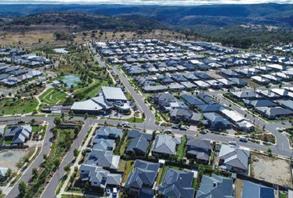
The NSW residents would be expected to pay ACT-style rates, vote in NSW and Yass Valley council elections, pay NSW stamp duty with services, including roads, healthcare, education, garbage, police, and emergency services provided by the ACT. Almost a decade ago discussions began with NSW to shift the border to incorporate the area in the ACT but an agreement has yet to be reached.
Any other expansion of the ACT border is unlikely given the emphasis on compact city policies. However, the desirability of treating the ACT and surrounding NSW as one urban area is recognised to address population growth, interdependent economic relationships and complex issues of service delivery.
Mechanisms have been established to improve regional outcomes and service delivery. They include the ACT/ NSW Memorandum of Understanding, the Canberra Region Joint Organisation, a letter of intent between the ACT and the Queanbeyan-Palerang Council and the draft South East and Tablelands Regional Plan 2041.

The Regional Plan does not apply in the ACT providing a framework for planning, growth management and infrastructure for NSW local government areas surrounding the territory.
Work has commenced on a cross-border infrastructure funding model and a mechanism for sharing
information and monitoring trends.
The NSW government has instigated regional Urban Development Programs (UDPs) with a UDP to be prepared for the South-East and Tablelands Region. It will inform planning and infrastructure decisionmaking, identify environmental constraints, biodiversity offsets, and assess development feasibility and labour and materials availability.
The ACT government should collaborate with NSW to develop an Urban Development Plan (UDP) for the ACT and surrounding region to improve outcomes, although the differing objectives of stakeholders will remain a constraint.
The possibility of faster rail services between Canberra and Sydney cannot be completely discounted. While the federal government has indicated Sydney to Newcastle is the first priority for the recently established High Speed Rail Authority, a link from Macarthur to near Mittagong deserves investigation. The link would improve services from Sydney to Canberra and Melbourne, be substantially cheaper than the Newcastle link and assist the decentralisation of population alleviating pressure on housing and infrastructure.
Mike Quirk is a former NCDC and ACT government planner.

By diverting population growth from the ACT, the government is reducing revenue from Commonwealth grants, land sales, stamp duty and rates,” writes MIKE QUIRK .
ANYONE of a certain age no doubt has been frequently asked: “What was the most famous song of World War II?”
For post-Boomers and those who came in late, World War II was the global conflict that took place between 1939 and 1945 (or for Americans 1941 and 1945).
Many might have suggested one of Vera Lynn’s songs, but in fact the most famous song of the war was without doubt “Lili Marlene”.
The original lyrics were based on a poem written during World War I by German soldier Hans Leip. The poem was originally titled “Das Mädchen unter der Laterne” (“The Girl under the Lantern”).
In the poem, Leip combined the name of his sweetheart at home (Lili) with that of his wartime sweetheart (nurse Marlene).
In 1937, it was put to music and sung by the German chanteuse Lale Andersen but only sold 700 copies. In 1938, German film music composer Norbert Schultze re-recorded the song and gave it the title “Lili Marlene”.


In 1941, a soldier working for the German forces radio station in occupied Belgrade was sent to Vienna to find suitable records to broadcast to Gen Erwin Rommel’s Afrika Korps. And, you guessed it, one of the records he brought back from Vienna was “Lili Marlene”.
The German forces radio station in Belgrade first played it on August 18, 1941. It was an instant hit with Rommel’s men, and for the next three years Soldatensender Belgrad played it almost every night at 9.57 pm. It then became a huge hit throughout Nazi-occupied Europe.
At the same time, “Lili Marlene” became popular
with Eighth Army soldiers in the North African desert who also listened to the music from Belgrade. The Eighth Army was made up of seven British divisions and four Commonwealth divisions, including the 4th and 5th Indian Divisions, 9th Australian Division and New Zealand Division.
When its popularity with the Eighth Army became known to German propagandists, they had British traitor Norman Baillie-Stewart write English lyrics for the song, and it was re-recorded by Lale Andersen for beaming to the Eighth Army.
The Orwellian British Ministry of Information was so concerned about its potentially subversive effect on British morale that it commissioned British lyricist Tommie Connor to write a different set of English lyrics for the song. Anne Shelton recorded Connor’s version and it became a huge hit, including in Australia.

Connor’s version retained the core sentiments of love and yearning amid the trials of war but reworded the lyrics to suit an English-speaking audience and better reflect the experiences of British and allied soldiers.
language that was designed to demoralise German soldiers. She became synonymous with the song, performing it many times over the following years.
I don’t believe there is another song that has been so exploited for propaganda purposes – or captured the emotions of everyone involved in a conflict. Certainly nothing to compare to “Lili Marlene” – the haunting nostalgic song that appealed to both sides. For those who might be interested, here are the lyrics sung by Anne Shelton with a link to the song:
Underneath the lantern, by the barrack gate, Darling I remember the way you used to wait. ‘ Twas there that you whispered tenderly, That you loved me, You’d always be, My Lili of the lamplight, My own Lili Marlene.
Time would come for roll call, Time for us to part, Darling I’d caress you and press you to my heart,
By Lily PASSSUKHRAJ Singh, 41, wanted to write a book for Australia, to show his link to both of the countries he calls home.

Sukhraj was born in Malout, India, but moved to Sydney in 2008, and then to Canberra in 2011.
“When I was 18-years-old my father died of a heart attack, and then mum died 12 months later of cancer,” he says.
good-night, My Lili of the lamplight, My own Lili Marlene.
Orders came for sailing somewhere over there, All confined to barracks was more than I could bear; I knew you were waiting in the street, I heard your feet, But could not meet, My Lili of the lamplight, My own Lili Marlene.
Resting in a billet, just behind the line, Even tho’ we’re parted, your lips are close to mine. You wait where that lantern softly gleams. Your sweet face seems to haunt my dreams.
My Lili of the lamplight, My own Lili Marlene.
It’s at secondhandsongs.com/ performance/278448
Clive Wil
“My twenties were a fairly turbu lent period, so I came to Australia in hope of a better future.”

He says his parents were school teachers, so he and his siblings enjoyed a childhood of reading from a small library in their family home.
“I kept reading books from my childhood, I still do now, and I have always enjoyed writing,” he says.
“I usually write poetry in Punjabi. I’ve been doing it for years now, but I wanted to do something for Australia.
“My friends here encouraged me to write a story in English, to introduce my stories to a broader audience in the language of my new home.”
So he did, and he called the book “Kirna”. “Kirna is a princess name, there is a mystery in the book, but I can’t tell you, you’ll have to read it,” he says.
“Kirna means, in my language, sunrays; a light, so I feel it was a good name, my heart said it was the right decision.
“In the book, ‘Kirna’, it links the modern with the ancient in a tale of mystery, kinship, love, betrayal and vengeance.
“This book is just for entertainment purposes, it’s about reincarnation but it’s just my imagination,” he says.
Sukhraj explains he has a head full of new adventures and hopes.
“I believe my imagination is good, from childhood I was very fond of kingdom stories, so that’s why I decided to write this,” he says.
“Another story I’m working on is a kidnapping story, but I left it behind to focus on this one, but that will be the next one, they just take a long time.
“It took me almost seven years to
“Kirna” was published on June 28.

“I found work with Costco when I first came to Canberra, and I got my first manager to read over it,” he says.

“My first manager, Richard Savage, was the assistant warehouse manager, but before Costco he worked at a publication house.

“I sent him the finished book, and he read over it again and helped me get it published.
“So now my book is being sold in every Australian Costco and every NZ Costco.
“In Costco, this has never happened before, someone from my community having a book in there, or even as an employee, it’s the first time an employee wrote a book and had it sold in Costco.”
He says he couldn’t have done it without the support of the staff and his friends, and his Canberra home.
“The people I trust have read the book, and I asked for their honest reviews, and they all said they loved it,” he says.
“I love Canberra, there’s not much traffic, it’s a simple life, and there are good, big cities nearby, but Canberra has a calm atmosphere that encourages me to write.
“My son has only read one chapter but he liked it, so it’s good for kids, teenagers, middle-aged or elderly people to read my book. I’m sure they will feel entertained. I don’t believe people will find my work disappointing.”
“Kirna” is available at every Australian Costco store.
tale of love and betrayalFrom left, singers Anne Shelton, Marlene Dietrich and Lale Andersen… all recorded “Lili Marlene” during World War II. Author Sukhraj Singh.
IT was interesting to read that an ACT judge has slammed a Canberra detective for trying to “cover up” the mishandling of evidence, remarking that “lawlessness on the part of police encourages lawlessness in our society”.
It was refreshing to read that the AFP detective was held (somewhat) accountable for his unlawful practice of redacting a note in his official AFP notebook, and falsely denying that he had been told the device was examined out of time.
Unfortunately, this was not the case in the coronial hearing of my daughter, where it was determined that evidence (CCTV DVR) was returned by an AFP officer to a significant witness in the investigation; just two days after Brontë’s death.

At the hearing, there was confusion between the two AFP officers (one of whom is no longer an officer), as they “ummed and ahhed” regarding the reasoning of why the evidence was returned. Their responses were vague in nature, with no evidence through contemporaneous notes of the AFP officer involved in returning the CCTV DVR.
Our family engaged an independent CCTV expert (at the cost of $11,000), however there is a crucial 46 minutes of footage missing, which can never be found.
Three years later, I am still requesting a copy of the legislation regarding the storage of evidence in coronial matters; I am still none the wiser. Does anyone in the community know, because I am certainly not getting answers from the AFP or Police Minister Mick Gentleman?
As it currently stands, we will never know what happened to Brontë. Oh, and no one was held accountable – no surprises there.
The law is beginning to look more and more like an ass as time goes on (and on and on). Tedious.
Janine Haskins, CookIT is surprising that the chief minister is extolling the virtues of Mr Fluffy dual occupancies in his plans for Canberra.
They are essentially planning failures because they cover the whole block with impervious material.
The last things we want in a warming
climate are residential blocks with no space for plants and trees.
The Greens are calling for “30 per cent permeable surfaces to cool our city” - that should put an end to Mr Fluffy dual occupancy lookalikes if this policy is endorsed. The Chief Minister may not like the 30 per cent.
The government planners should be able to do a lot better than regurgitating Mr Fluffy.
David Denham, GriffithPAUL Costigan gives “a special thanks” to our “city’s former designers and planners” (“Enough! The time has finally come to walk away“, CN September 6).
We give special thanks to him for reminding us of their role and enduring contributions, and for raising community awareness about our urban design, history, values and vast untapped opportunities for extending and enjoying our city’s uniqueness.
All at a time when such matters seem increasingly ignored by the government as necessary underpinnings of this city’s existence, workability, appearance, and future appeal as a preferred place to live, work and visit.
Paul also leaves a lasting legacy that must live on through community initiative, watchfulness and action.
The valuable foundations of this city should be built on, not squandered or destroyed via loads of conveniently timed political utterings, spin and platitudes that don’t ensure high-quality planning and delivery of improved physical, visual and social amenity for the benefit of the broader public who live here and the many who should be enticed to visit from interstate and overseas.
Government seems to be fast losing the plot, and the funds for focusing on the other equally important components of what is instead ending up as a rapidly densifying,
heat trapping, urban landscape that is also decaying in too many places, year after year.
Many of the matters arising and not being met are piling up, yet they have been thoughtfully observed, identified and analysed by Paul Costigan, month after month.

The current imbalances around us are fast causing many to lose pride in their city and local surroundings. Trust is also being lost in those who should be committing to and guaranteeing the delivery of far better and more generous on-the-ground “people-focused” and liveability outcomes – but aren’t.
May “CityNews’s” independent reporting attract other knowledgeable and insightful commentators who can regularly provide the information, analysis and think pieces we need on these matters because our elected representatives and their administrations still seem unwilling or unable to be honest and open about them.
Sue Dyer, DownerI’M not one to normally agree with the sentiments of former ACT Opposition Leader, Bill Stefaniak, but in this case I fully agree.
He has criticised the blatant disregard by the chief minister for his colleagues’ overwhelming support to have an independent (and hopefully scientific – my words) review into the culling of Canberra’s kangaroos. It seems 268 of 270 delegates at the ALP’s ACT Conference supported it.
Bill made the point that “if you are in power for too long, hubris and a dictatorial attitude can creep in”. We only need to look at the world news to see where that can lead!
As a long-term resident of Canberra, I am deeply concerned, for both the kangaroos and my fellow citizens! Bring on that independent scientific review.
Dr Gina Newton, HughesI WOULD like to comment on the Yass Valley Council and its absolutely ridiculously longwinded, drawn out, totally unacceptable and unreasonable development application (DA) processes.
My daughter and her partner have been waiting an eternity for their DA to be approved for what is a very, very simple extension project.
After 10 weeks of waiting, countless emails, phone calls and actual visits to council chambers, they have recently been informed that the person handling their DA has left council and that their DA will now have to be dealt with by someone else!
Another builder friend of ours purchased a vacant block of land in Yass with the intent of building a spec home and on-selling at completion. What he and his son thought would be an excellent opportunity to showcase their prowess, contribute to the local housing economy and, of course, make some money at the project’s completion, turned out to be a nightmare.
After eventually being granted approval to develop, our friend then had to deal with inept and totally unreasonable council personnel throughout the construct. He has vowed never again to take on a project within the Yass Valley Council.
After having personally dealt (seamlessly and timely) with the Cootamundra Council over the years and more recently the ACT government and Eurobodalla Council, I am astonished as to why the Yass Valley Council just cannot get it right!
Our most recent dealing with the Eurobodalla Council involves construction of a large elevated rear deck, engineering/ construction certificates, surveys, trade liaison, etcetera. We had our DA approved within two weeks!
One would think that with the proximity of Yass to Canberra and with more and more people searching for a country style of living, the Yass Valley Council would welcome potential residents/builders/newcomers with open arms and do everything in its power to make the process as seamless and comfortable as possible; not so.
It’s time for the Yass Valley Council to totally review its internal DA processes, as what’s currently in place is clearly unacceptable and unreasonable.
I’m wondering if any of the wider audience of readers have had similar dealings and/or could comment on their experiences?
John Bone, via email
I RECEIVED the 10-page “Official Referendum Booklet” in my mailbox several days ago.
I read the booklet and recognised the familiar arguments that have been promoted by the ‘Yes’ and ’No’ campaigns.
While I already know how I will vote, I
have been saddened by the confusing and divisive nature this campaign has taken on.
The object of the Voice is to unite the nation so we can bring about the change that will address the imbalances that still exist between our First Peoples and the non-indigenous population.
Their needs are complex and influenced by strongly held, ancient cultural beliefs. The existing methods employed to deliver appropriate support where it’s needed, have become fragmented and ineffective.
The people who feel most threatened by the proposed change in our constitution, need a majority “No” vote to maintain the status quo, which has existed for more than 200 years.
The “No” campaign employs volatile language, threats of land grabs, budget blowouts, radical activism, division and fear to influence those of us who are undecided.
I look at this in the same way that I’ve thought about other social issues that we struggle to deal with. If what we’re doing hasn’t been successful, it’s time to change the way we approach the issue.
We need to focus on what change is needed, where and how to bring those changes to bear.
If chosen representatives of the indigenous people are drawn into the consultation process, on a permanent basis, surely better decisions can be made that will bring about the desired outcomes?
As a responsible person who recognises injustice I will be voting ‘Yes’.
Carole Ford, via email
I HEARTILY agree with Sue Dyer (Letters, CN September 7): those urging Zed Seselja to run again for the Senate in 2025 must be confused or delusional. Zed was comfortably defeated (despite some almost Trumpian trickery) in the Senate vote by independent candidate David Pocock.
Former rugby great Senator Pocock has been a revelation, showing more wisdom and common sense than many other federal politicians, especially on vitally important issues such as climate change. I’m sure he would have taken note of the warning from incoming RBA governor Michele Bullock about climate change and the risks it poses to the Australian economy and the Australian people.
Dr Douglas Mackenzie, Deakin
TO Canberra’s west are two districts with a strong sense of community and a variety of friendly businesses, Weston Creek and Molonglo Valley.
Weston Creek was named after Capt George Edward Weston, a former officer of the East India company, who came to Australia in 1829.
Molonglo Valley derives its name from an Aboriginal expression meaning “the sound of thunder”.
BLACKSHAW Real Estate was established in 1988, but the Weston Creek franchise was established two years ago and is the latest franchisee in the Blackshaw family, says franchise principal and licensed agent Sean Rogers.

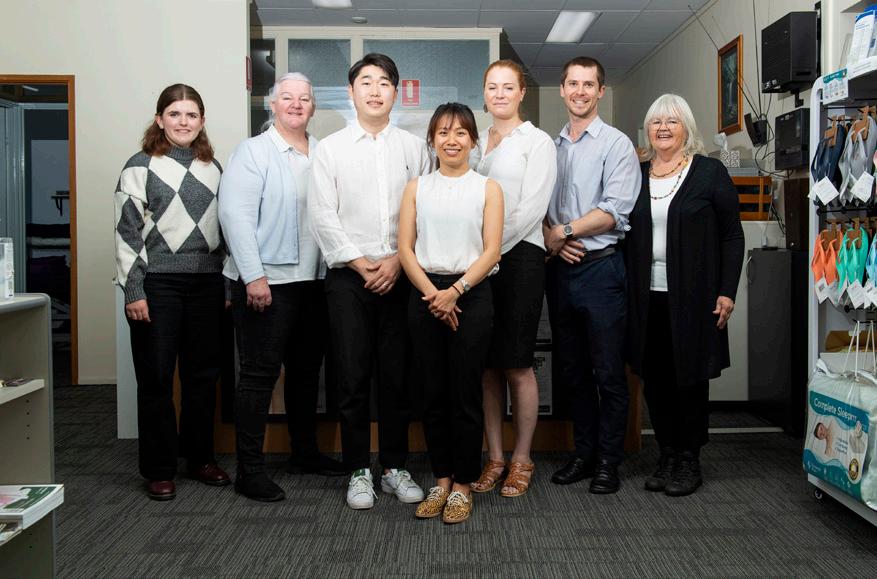
“With a family of over 100 staff, we place substantial importance on training and service standards to continue the Blackshaw legacy,” he says.
Sean has been selling real estate in the area for 10 years.
“I grew up in the Weston Creek region and I’m devoted and committed to providing ongoing support in the area,” he says.
“We are a passionate business looking to contribute to the community and provide professional, honest and ongoing real estate advice and support.”
Sean says Weston Creek and Molonglo are now the geographical centre of Canberra.
“The location offers fantastic opportunities for young families, with excellent schooling and sporting options,” he says.
“It’s approximately 10-15 minutes to all major work hubs and shopping centres throughout Canberra; it’s a great location with access to outdoor facilities.
Sean says whether it be somewhere to live long term and bring up children, or for building a property portfolio of investment properties, Blackshaw Weston Creek & Molon -
glo is committed to work with the community to help people achieve their goals.
“We’ve always been passionate about helping people achieve their goals and dreams around real estate.”
Blackshaw Weston Creek & Molonglo, 11 Brierly Street, Weston. Call 6288 5009, or visit blackshaw.com.au
easy to access and there’s free parking.
“We serve both the older population who have been coming to us for the 45+ years, but we also serve the new people and families who move into the area.”
Sam says at Weston Creek Chiropractic Centre, their approach is all about



standards of care, and we work together to help our patients feel and function their best so they can get the most out of life.”
Weston Creek Chiropractic Centre, 1/43 Brierly Street, Weston. Call 6288 6711, or visit wcccentre.com.au
Our dedicated team will provide you with the best Chiropractic care and Massage Therapy

Our clinic has been providing chiropractic care in the local community for over 40 years.
At Weston Creek Chiropractic & Massage Centre, our approach is all about you, the patient. Our team is focused on providing customised care to help you achieve your unique goals. We do that by staying up-to-date on the latest evidence-based chiropractic advances and keeping your comfort and wellbeing in mind at all times.


We are open Monday to Saturday, and can provide evening appointments. Monday to Friday 9:00am - 6:00pm | Saturday 9:00am - 12:00pm | Sunday CLOSED
We are located upstairs at: Level 1, 43 Brierly Street, Weston ACT 2611 (near the Cooleman Court shopping centre in Weston Creek)
Phone 6288 6711 | www.wcccentre.com.au
Consultation is by appointment only. A referral from your doctor is not necessary for chiropractic treatment.
Contact us for a copy of our current Newsletter, which has a complete listing of all other courses and classes.
Classes
MATURE FITNESS
ZUMBA GOLD
FACiLITIES
YOGA FOR BEGINNERS & MEDITATION
BELLY DANCE - INTERMEDIATE
mSWING CREATIVE WRITING
SQUASH COURTS PERFORMANCE / EXHIBITION HALL FUNCTION HALL
MEETING ROOMS
STROMLO CHRISTIAN CHURCH
AUSTRALIAN NAVIGATORS
BOOKKEEPING
FITBALL CLASS TYPING
PRESENTATION BINDING
VALLEY BAPTIST CHURCH
MOUNTAINS TO MOLEHILLS
PHOTOCOPYING
SCAN & EMAILING

WESTON NEIGHBOURHOOD HALL
Large hall with kitchen facilities.
CHIFLEY COMMUNITY ROOM
LAMINATING
JUSTICE OF THE PEACE
FLYNN COMMUNITY HALL
Beautiful hall with new commercial kitchen. Fully air-cond.
Large meeting room with kitchen facilities. Fully air-cond.
HOLT NEIGHBOURHOOD HALL
Large hall, 2 meeting rooms. Fully air-cond. Small enclosed courtyard.
OFFICE OPENING HOURS Monday - Friday: 8:30am - 5pm Facilities available 7 days a week CONTACT
PHONE: 6288 1144 / 6288 0144 WEB: westoncccentre.org.au
MOBILE: O466 726 785 EMAIL: info@westoncccentre.org.au

as they grow and connect with the people and natural world around them, says marketing and communications manager Nick Weatherstone.
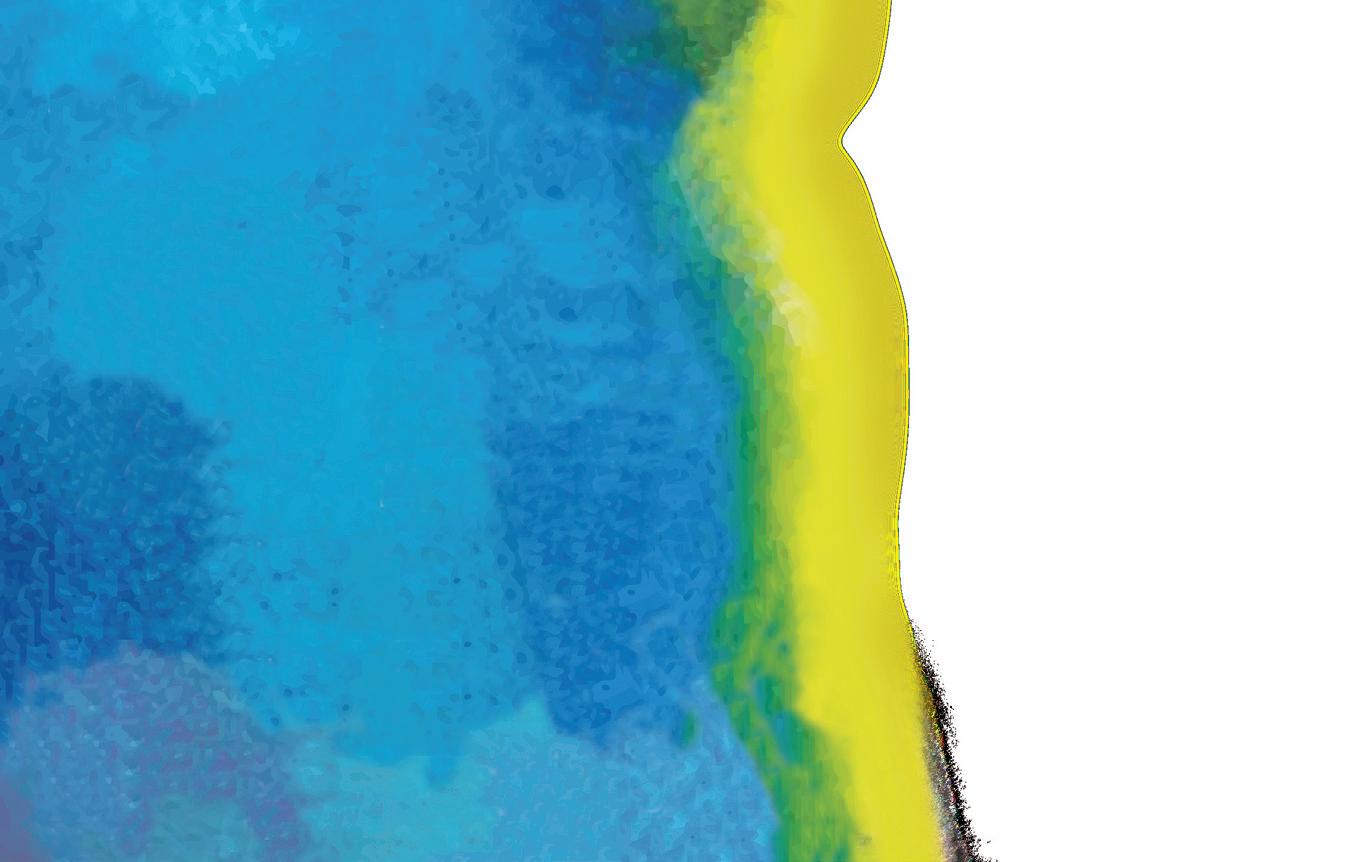
“The school’s educational focus encompasses the Australian Curriculum is distinctly different with its rigorous curriculum that encourages deeper, real-world learning, leading to engaged learning and academic success,” he says.



“The philosophical underpinnings of Dr Rudolf Steiner is grounded in engaging students deeply in their learning and connecting them to the natural and social worlds by encouraging imagination, empathy, creativity and individuality.”
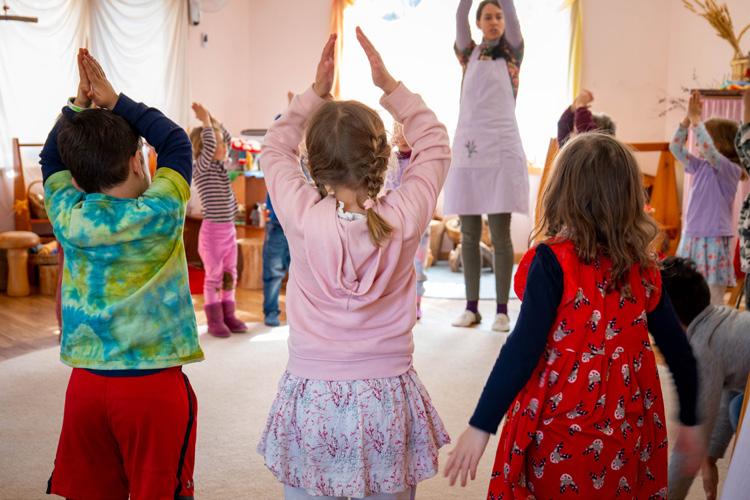
Nick says the staff are passionate about seeing each
the educational philosophy, and is demonstrated through classroom activities, seasons, festivals and the curriculum,” he says.
“Being the only Steiner School in the Canberra region, Weston Creek is an ideal location due to its geographically central location.
“This makes our school accessible for our students coming from all of Canberra and its surrounds, and it is close to major transport routes making it easy for our students to travel to school via private or public transport.”
Orana Steiner School, Unwin Place, Weston. Call 6288 4283, or visit oranaschool.com
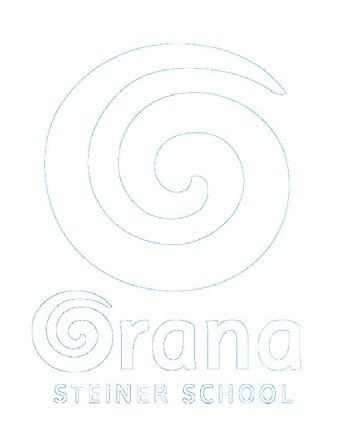


STRENGTH and balance classes are important for reducing the risk of falls, says Arthritis ACT CEO Rebecca Davey.
“It’s important to remain active at all ages, to condition muscles that protect against injury”, she says, and Arthritis ACT has solutions for people of varying abilities.
“We run these strength and balance classes at the Weston Creek Community Centre on Whitney Place, every Tuesday from 10am to 11am,” she says.
“One of the biggest injuries older Australians suffer is minimum trauma fractures such as fractured wrists, often from just simply tripping over a gutter or down the back steps.
“These classes assist us to lessen our risk of these types of falls whilst also helping us ‘save ourselves’ a bit better, before we hurt ourselves.”
Rebecca says most people who attend the classes say it’s not just the exercises that help, but it’s also meeting local people and making new friendships within the classes.
“There’s often just as much jaw exercise happening with the conversations and general laughter in the room, as there are structured exercises,” she says.
“No task is too big or small for us.”
Arthritis ACT classes at Whitney Place, Weston. Call 1800 011041 or visit arthritisact.org.au
and we finally settled into our Weston home in December 1980.
“The history and sense of community really makes us stand out from other clubs, and our ongoing symbiotic relationship with the Canberra Labor Club staff, especially with Jo and her team, makes us always feel welcome.”
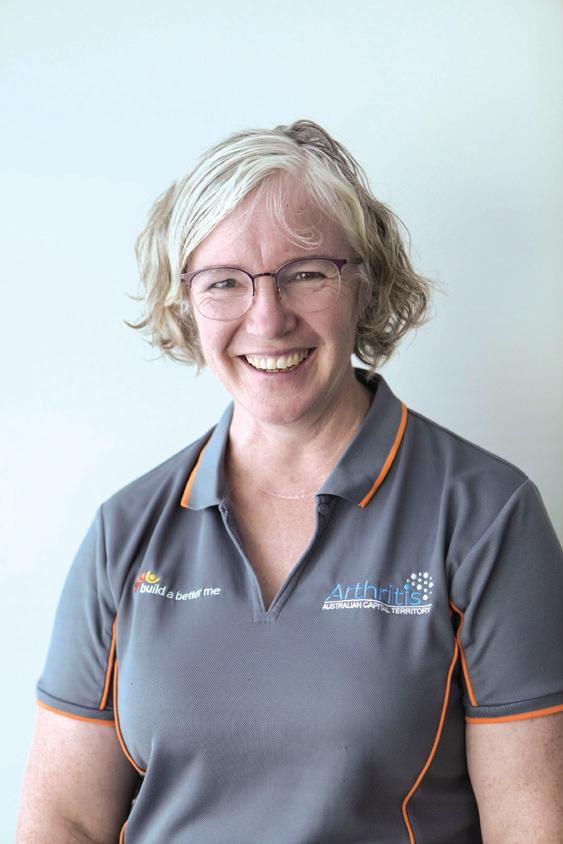
Michael says he’s been bowling since 2020.
“The fact I can do the sport both socially and competitively against all people drives my
“The last couple of years the men’s and women’s clubs have combined, so now we are seeing all people included in this great club.”
Michael says there is ramp access to the greens, too.
“We pride ourselves on including all people in this great sport.”
Weston Creek Bowling Club, 2 Teesdale Close, Stirling. Call 6288 5047, or visit wcbc.com.au

Weston Creek Bowling Club is nestled amongst picturesque gardens and surrounded by leafy trees, parkland and ovals. Our little oasis is part of the Weston Creek Labor Club and is located in Teesdale Close Stirling. We have 2 tifdwarf grass greens plus Canberra’s first synthetic (outdoor carpet) green which is available for bowls all year round and in almost any weather conditions.


Members and visitors, both male and female, are always welcome at any of the three weekly social bowls games. Dress is always casual and comfortable.
The social bowls days are:–
Tuesdays:- Matches of three-bowl pairs of 18 ends commencing at 10.30am. All welcome Thursdays and Saturdays:- All matches of pairs of 21 ends. Games start at 12:30pm. All welcome


Linda is an experienced physiotherapist having worked clinically in private practice for over 20 years, in rehabilitation settings and in community based aged care. Having owned and operated her own clinic for over 10 years, Linda offered a range of different therapy options, and has refined her skills and service offerings to ensure a functional focus to therapy; that is holistic and promotes overall wellness. A dancer in a past life, Linda loves to add a bit of fun in her programs, often throwing in rhythm and co-ordination challenges that are good for the body and the mind.
Sophie has post graduate qualifications in hydrotherapy, and as a non-sports centred Exercise Physiologist, helps clients who struggle with engaging in exercise due to a lack of sports participation. Sophie’s goal is to improve clients health via our hydrotherapy program, gym instruction and in-home visits. Sophie also is known for her passion for working with children.
Tash takes a wholistic view of all her clients, considering their mental wellbeing as much as their physical needs. Tash delivers our Nordic Walking, Pilates and Tai Chi programs, all of which have a mental as well as physical component.
Tash also leads our strength and balance program, supporting those with lower levels of mobility or have concerns over falls to regain their confidence, whilst also meeting a great bunch of fellow exercise class participants.
Dorothy is our newest graduate Exercise Physiologist who we employed because she was such an outstanding student. Dorothy excells with us, having a soft spot for both older persons with pain, but also a long history of working in disability services with children. Dorothy loves working with people to improve their pain and function, and always has a bright smile for everyone in her care.
Blake has expertise in improving clients mobility and decreasing their pain through appropriate exercise. Blake delivers our ‘My Exercise’ program, targeting the relief of lower back and sciatic pain, shoulder and upper body concerns as well as leg, hip and ankle interventions – for those who do not qualify for physiotherapy-led GLAD programs.
Blake provides individual & group exercise for younger people with a disability. Blake treats clients in-clinic or via our hydrotherapy program as well as attending your gym with you.





Jacqui has a particular interest in hip and knee osteoarthritis. Jacqui delivers the GLAD program designed to reduce the need for joint replacements, or if a joint replacement is unavoidable, to prepare you thoroughly for surgery and recovery for day to day tasks. Jacqui is studying towards a PhD in the outcomes of the GLAD program.
Holly is a former sports journalist who believed so strongly in the power of exercise to heal and nurture that she undertook her 4 year degree in Exercise Physiology. Holly is be able to work with people directly to support them through their pain journey and regain independence and a joy for living again. Holly provides one on one and group exercise classes both on land and at our hydrotherapy centres to support people to gain freedom from chronic pain.


• Occupational Therapy – Assistance with the planning and modification of your home, workplace or car. Applications for NDIS, the Disability and Housing Support Pension, and also driving assessments.
• Physiotherapy – including the GLAD program for knee and hip osteoarthritis, sports injury prevention and rehabilitation, and pain condition support.
• Exercise Physiology – Individual exercise prescriptions, small group classes to increase strength and improve rehabilitation, strength and balance classes, hydrotherapy support.
• Dietetics – meal planning, weight management support, food intolerance support.
“You do not need to have any particular condition to utilise our services, just a desire to ‘Build a Better You.’
ADRIA Care combines access to important facilities with a feel of privacy, making it the perfect place for retirement, says a spokesperson.
“There’s close access to Cooleman Court and Woden Westfield, but we are surrounded by reserves and parklands making it a very peaceful atmosphere for residents,” they say.
Located in the heart of Weston Creek, Adria Care, which has two dedicated respite rooms and a special care unit, offers residential care for 42 residents. The village also contains 36 independent living units.



The spokesperson says the village offers residents a wide range of things to do, and that they can get involved as little or as much as they’d like.
“We have an active residents’ committee who
ST John Vianney’s, Waramanga, is situated on spacious and well-kept grounds featuring extensive spaces for all students, says acting principal Nina De Rosa.
“Our school follows the example of our Patron Saint, John Vianney, striving to do ordinary things extraordinarily well,” she says.
“Children, regardless of their needs or faith background, are welcome and every effort is made to support all students and families in our school.
“St John Vianney’s is staffed by highly-trained professionals, committed to providing the best of Catholic education.”
Nina says their teaching approaches are evidence-based and centred upon the key pedagogies of explicit and direct instruction.
“We place significant emphasis on literacy and numeracy as we believe these are important
foundations for learning across all areas,” she says.
“We teach students to have a growth mindset and to recognise the importance of being a life-long learner.
“Our school is well resourced, with interactive LED boards in every classroom, and all year levels have access to their own iPad or laptop.”
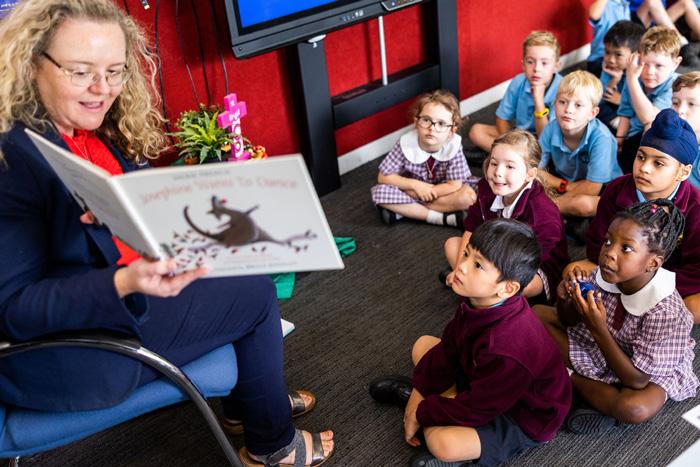
Nina says students at St John Vianney’s participate in specialist classes in the performing arts, Italian, library and health programs.
“At St John Vianney’s all students are provided with an individualised education and all community members are treated as family,” she says.
“It is a very special place to belong to.”
St John Vianney’s, Namatjira Drive, Waramanga. Call 6288 2383, or visit sjv.act.edu.au
organise lots of get-togethers. Residents can play cards, go to morning teas and happy hours, enjoy exercise, and much more,” they say.
Established in 1994 by volunteers of the Croatian community of Canberra and Queanbeyan, the spokesperson also says the village is home to a greatly multicultural group of people.
“We have residents [from] Australia, Croatia, China, France, Macedonia, Hungary and more,” they say.
“There are great residents and great staff committed to the best outcomes for the community.”
Adria Care, 89 Fremantle Drive, Stirling. Call 6288 0198, or visit adria.org.au

Set amongst landscaped grounds, Adria Care in Stirling is a warm and welcoming community of people from all around the world. We pride ourselves on cultural diversity and celebration, and offer a wide range of activities to cater for all interests. We provide care for Croatian and all other nationalities.
Adria Care fosters individuality and independence, providing support and assistance to enable residents to live in a comfortable and secure environment. It offers residential care for 42 residents, incorporating 2 respite rooms and special care. All rooms are single rooms with ensuite.
The village also contains 36 independent living villas. All villas have 2 bedrooms, a courtyard and a garden, and residents enjoy a peaceful and welcoming community lifestyle.
Our aim is to provide a caring, safe, home-like atmosphere, reflecting your rights to dignity, respect, privacy, safety and the best quality of life.
Contact our friendly staff today to arrange a personal tour.
Email: admin@adria.org.au
Address: 89 Fremantle Drive, Stirling, ACT
“Our dentists are experienced at caring for people of all ages, from young children who are growing their first teeth all the way through to seniors,” she says.
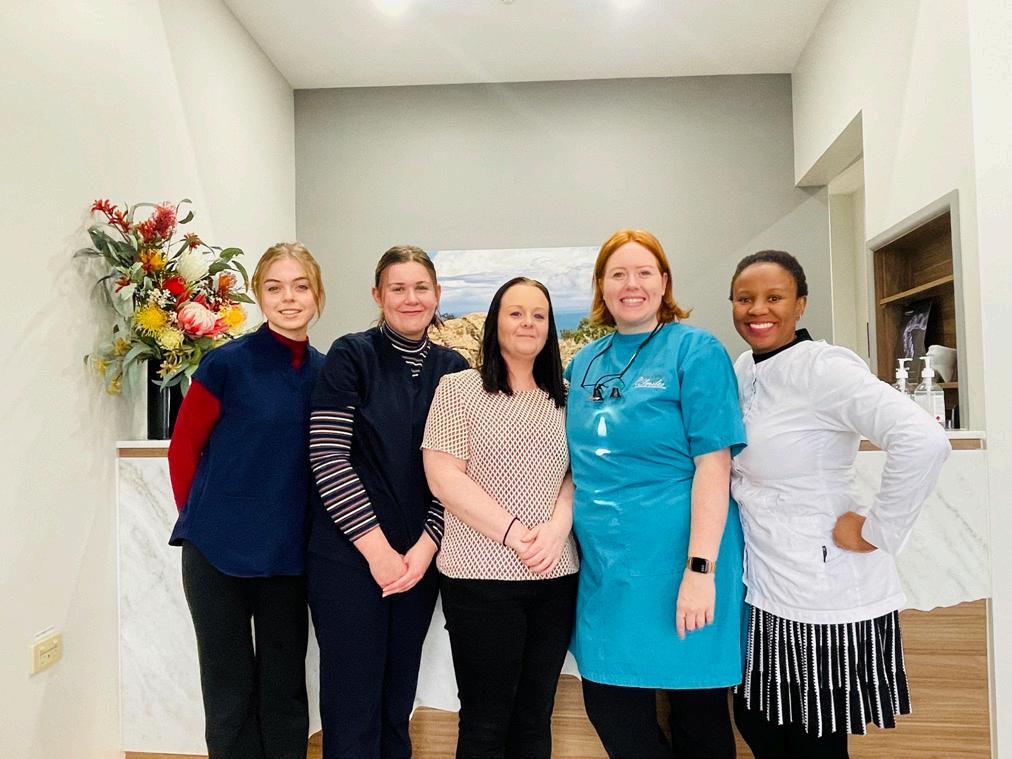
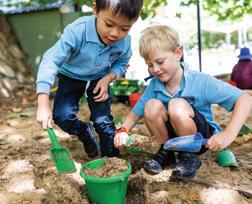
“The services we provide include general check-ups and cleans, crown and bridge work, veneers, children’s dentistry, fillings, traditional braces, clear aligners and dental implants.”
Unah says when the dentists at Evolving Smiles examine patients, it’s not just looking at teeth.


“We also look at function, and discuss the oral/ systemic connection,” she says.


“We educate our patients and only recommend treatment we would have done on our own families.”
Unah says they currently have a fantastic, limited time offer, running until October 31.
“Discover the pinnacle of dental care with our meticulously crafted package that includes a comprehensive dental check-up and cleaning, all topped off with a free teeth whitening session,” she says.
Evolving Smiles, 23/3 Felstead Vista, Denman Prospect. Call 6109 9440, or visit evolvingsmiles.com.au


AS the season changes and the days get warmer, it’s time to start spending more time outdoors. What better way to celebrate spring than dusting off and sparking up the barbecue to catch up with friends and family.

SOUTHLANDS Quality Meats has been serving “fresh and quality” products to the Canberra community for 27 years, says owner Reece Travers.
“What we offer is fresh meat. A lot of other butcher shops do cooked meat. We do cooked meat, too, but we pride ourselves on fresh, quality meat,” he says.
“We also have a smoke oven where we do all our smoking of our own fish and bacon. As well, we won best bacon in Australia three times, which is pretty good, so bacon is a huge one for us and we do all our own hams and smallgoods, which we pride ourselves on, too.”

Reece says customers who shop at South lands Quality Meats get an experience they won’t get in a supermarket or anywhere else.
“They are going to get awesome customer service. We’re going to be able to help you find the cut that suits your needs, help you learn how to cook it, and you’re also going to get a better experience when you eat it because it’s going to be full of flavour and it’s going to be fresh,”

People want good meat, he says, “and they just want to enjoy barbecuing, so we will be getting plenty of people in as the weather
Southlands Quality Meats, Shop 1/93 Mawson Place, Mawson. Call 6286 2993, or visit Southlands Quality Meats on Facebook and Instagram.

Dimitri Mihailakis says he’s proud to offer restaurant-quality meat, and knows customers really appreciate it.
“People love being able to do it for themselves at home, without compromising the quality,” he says.
“They can make a whole event around it, and so we try to source locally where we can, and offer grass-fed, free-range and organic produce.”
Dimitri says they offer everything from Cowra lamb to a dozen varieties of sausage made in-house.
“We have three full-time butchers, and we’ve had them for as long as I can remember,” he says.
“Our skilled team packages all the classic and more adventurous cuts of meat, alternatively the team are more than happy to freshly cut any piece of meat to order.
“Some of our interesting products include Borrowdale premium pork,


Cleavers organic meat range, Inglewood organic chicken, Game Farm corn-fed chicken, quail and spatchcock, Luv-a-Duck duck products, kangaroo, freshly butchered goat and more.”
Dimitri says they saw the opportunity to push forward and offer high-quality produce at low prices, “which gives customers a perfect opportunity to make the most of their barbecue as the weather improves”.

Ainslie IGA, 9-11 Edgar Street, Ainslie. Call 6248 5777, or visit ainslieiga.com.au

THE Fyshwick Markets is a local institution and Canberra’s oldest market, feeding Canberra families for more than 50 years, said a spokesperson.
Many of its stores offer fresh produce suitable for barbecuing; its butchers offer a wide range of meat and poultry and the seafood retailers offer a great range, too.
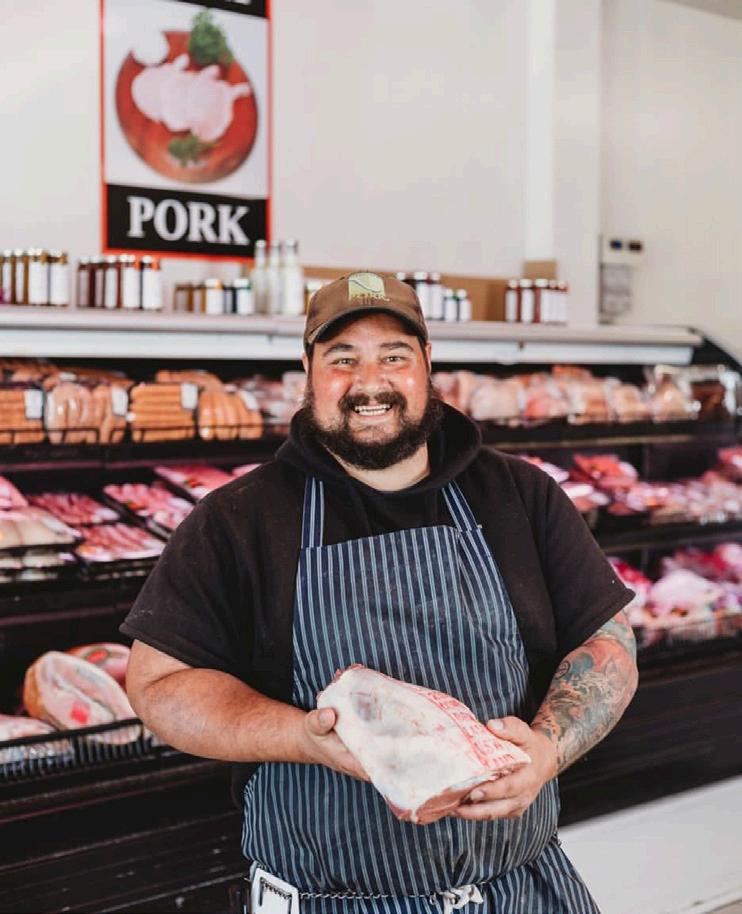


Fresh produce for side salads and other barbecue elements are avail able from the market’s greengrocers.
Fresh bread could be found at the bakeries and, for beer or wine, Plonk offers a great range.
The spokesperson said the mar kets offer unparalleled quality, range and convenience in one location.
The markets are open Thursday to Sunday, from 7am to 5.30pm, with extended trading hours during the Christmas period.
All locally and independently owned, the stallholders and their staff have a level of knowledge, experience and concern for their customers that provides a “charm ing” market feel.
Fyshwick Markets, 36 Mildura Street, Fyshwick. Call 6295 0606, or visit fyshwickmarkets.com.au

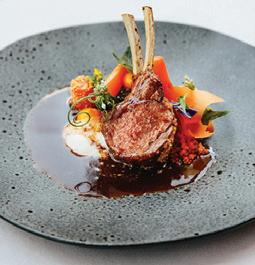
Ainslie IGA has a fullyserviced butchery that cuts and prepares top-grade meats, including free range and organic meat and chicken. We ensure our meat cuts are both top quality and also affordable. Our skilled team packages all the classic and more adventurous cuts of meat, alternatively the team are more than happy to freshly cut any piece of meat to
TRADING HOURS
Seven Days: 7.30am - 8pm (02) 6248 5777
9-11 Edgar St Ainslie, Canberra 2602

FORSYTHIAS are simple shrubs that grow well in our climate and, once flowering, their brilliant yellow flowers, on bare stems, signal that spring is here.
They are from the olive family and cope well with dry conditions. In fact, they’re drought tolerant once established and don’t mind being in full sun either.
Fast growing, they can grow up to four metres in the right spot. They green up nicely in summer and can be shaped into spheres, clipped into a hedge. If left unpruned, they will create an informal arching shrub that might need a little room to grow.
After flowering, the leaves appear and in summer the lime-green leaves darken with the season. Their autumnal yellow to purple colour is a really pretty feature as well.
They’re terrific as cut flowers in a vase and a low-maintenance shrub to fill a hot spot in the garden.
Forsythia are easy to propagate, and layering can be done by pegging long branches and covering with soil to get them to take root. Once they have, they can be potted up.
Fortunately, there
are no known pest and disease issues, and they are not fussy about soil types for growing, either. A tip: prune in spring and summer and a general fertilise is all they need, but every few years removing old dead stems from the base of the shrub will allow light into the centre to create new growth.

I am growing a white-flowering forsythia ( Abeliophyllum distichum) for its amazing fragrance.
FRITILLARIAS are unusual, rare, small bulbs that are flowering now. They grow to about 30 centimetres and have a wonderful display of checkered, pendant, bell-shaped dainty flowers. Colour varies from reddish-brown to purple or white.

Fritillarias, or “snake’s head”, look beautiful in a pot on their own or with a combination of other small bulbs or annual flowers. They’re not bothered by sun or shade, but just need good drainage so the bulbs don’t rot. They can be mass planted or grown in a meadow lawn. The benefit of growing them in the lawn is to keep the bulbs cool over the hottest months of the year.
If they’re coming via mail order, they’ll need to be planted as soon as they arrive as all lilies from the Liliaceae family have scales and can dry out quickly.
Soak in seaweed solution overnight and plant in well-prepared soil. Fritillarias can be finicky and a challenge to grow but worth it when you see them in flower.
NOW’S the season for plant fairs, open gardens and plant shows. It’s a busy time to buy locally produced plants and learn from experts who have grown them. The season starts with the Horticultural Society of Canberra show at the Wesley Centre in Forrest (September 16-17).
The Growing Friends of the Australian Botanic Gardens have a plant sale in the car park on September 16.

The Lanyon Plant Fair is back on the gardening calendar on September 23.

It is also the beginning, September 16, for Floriade, which runs until October 15. This year’s theme is “Floral Wonderland” and includes 21 garden beds with more than a million blooms. jackwar@home.netspeed.com.au


• Trim camellias that have finished flowering.
• Keep watering flowering trees and shrubs.


• Fertilise all garden beds with organic fertiliser.



• Plant out vegetable seedlings with protection from the frost.


takes the shine off brave athletic heroes
WITH a regional tour coming up, including a stop at Lanyon during Floriade, Dianna Nixon’s ongoing “Millicent Armstrong” project is in full swing.



Armstrong was the Gunning-region farmer who won a Croix de Guerre in World War I for her services as a nurse on the Western Front and a list of plays to her name that portray life on the land, including the tragic work “Drought”, which was awarded the 1923 Rupert Brooke Prize and performed in London.
Her one-act play “Fire” was placed third in the Sydney “Daily Telegraph” competition. “At Dusk” appeared in 1937 in a collection of Australian one-act plays and two drawingroom dramas, “Thomas” and “Penny Dreadful”, were published in a selection of her work in 1958.
When I caught up with Nixon, at her Dickson studio, she told me: “It wasn’t so much that I found Millicent, but that Millicent found me.
Nixon first encountered her in 2016, while surfing the internet for Gunning history when she was planning to buy a property in
Gunning, as she later did.
Nixon discovered Millicent who, with her sister Helen, had gone farming after the war. She noted that the sisters were literary collaborators and there are sister relationships in all her plays.
Millicent died in modest obscurity in 1973. Descendant John Lightfoot will attend the Lanyon performance.
In the Gunning region, she and Helen, both first-class honours graduates from


Sydney University, proved to be modest personalities who preferred not to shout their successes to the skies.
Nixon was astonished at what she found, asking herself whether, if Millicent had such a literary record, who else might there be?
That remains a rhetorical question for the time being, but during a period of research she found out as much as she could, and she was pleased to discover that Armstrong studied at the University of New England
Gothic” course.
She was assisted by an “Australian Dictionary Biography” entry by Kate Blackmore, which reveals that Armstrong first experimented with drama at Hôpital Auxiliaire d’Armées No.30. in France , where she wrote pantomimes, melodramas and variety shows in English and French, performed by staff and some of the casualties.
After more research, Nixon started
conducting workshops and readings of the plays, bolstered by the Gunning Arts Festival, where she held showings.
In a semi-staged reading of “At Dusk”, “Thomas”, “Penny Dreadful” and “Drought” at Margarita Georgiadis’ and Max Cullen’s Picture House Gallery in Gunning during 2021, Nixon was joined by Christopher Carroll, Heather Keens and Holly Ross. Now, stepping aside to focus on the production, she has also engaged actors Zsuzsi Soboslay, Caroline Simone O’Brien and Craig Alexander to complete the casting. All the actors are paid professional rates.
As director of Music Theatre Projects, she is a well-known voice and piano teacher and theatre worker who is determined that the “Millicent Project” should be a professional one. Although she has engaged Stephen Lindsay, of Old Binda Road Studios, Crookwell, to create a cinematic soundscape and score, only one of the plays, the famous “Drought”, is to be fully staged.
She’s had a little help from Arts ACT and Yass Valley Council and, with some billeting and in-kind motel support, the planned mini tour will take the show to Cobargo, Merimbula and Lanyon.
“Drought and other Plays by Millicent Armstrong”, Yass Memorial Hall, September 22; Cobargo School of Arts and The Twyford Merimbula, September 23 and Lanyon Homestead, September 24.




 By Helen Musa
By Helen Musa
THE Pivot Gallery at Belconnen Arts Centre has never looked quite as it does now, with no fewer than 248 images of owls by artist Sally Blake staring down – and even one wall features the shadowy outlines of extinct owls.
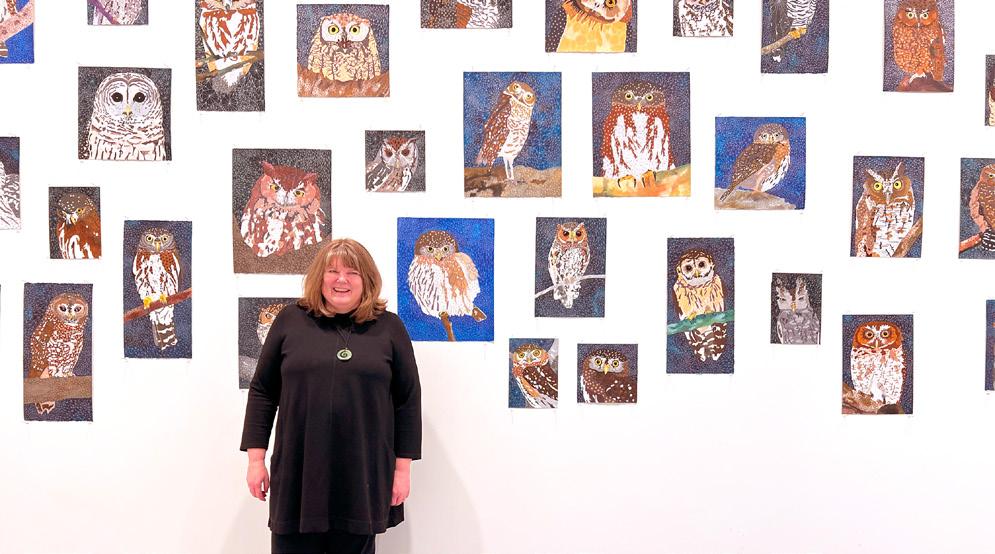
You feel you’re being watched.
Named after the collective noun for this bird of prey, “Wise Parliament” encapsulates both the term “a parliament of owls” (think a murder of crows, an exaltation of larks or a bellowing of bullfinches) and the reputation the bird best-loved by Athena, goddess of wisdom, has for intelligence.
Even the Indonesian national police counterterrorism squad “Densus 88” has the owl as its symbol of vigilance.
Blake, a well-known artist whose work is held by the ANU, the Australian National Botanic Gardens, the ACT Legislative Assembly and Tamworth Regional Art Gallery, works across textiles, drawing and sculpture. She has been fascinated by owls for a long time and has been working on this project for around two years of deep study, assisted by supplied images from 30 photographers around the world.
“Owls exist on every continent, every place in the world except for Antarctica,” she tells me.
“Humans have made such a big connection with owls, because they are forward-facing and have big round heads, like humans.”
Her studies lead her to the conclusion that we have found great, symbolic meaning in “this stunning creature” in different cultures.
To some, they are about death and renewal, most cultures would agree that they are observant, some cultures associate them with ghosts, others see them as foretelling events, pretty well everyone fears their nocturnal hooting sounds – “it’s what we’ve projected on to them,” Blake says.
“I have a theory that their forward gaze, looking at us, tells us that it’s time for us to think about our relation ship to what we do in the natural world,” she says.
Owls, she points out, are now endangered because of land clearing, also because of rodent-control poisoning, which puts them at great risk. Ironically, they were once respected as the best rodent controllers.
Another problem is that many owls have very small habitats and, for instance, may live on just one island.
It’s been a labour of love as Blake executed her many owl artworks of varying sizes in coloured pencil, drawn-over with coloured pens, but
Although she has a reputation as a sculptor, she’s never sculpted owls, rather focusing on covering as many species as she can, from barn owls to the sooty owl, the powerful owl, the barking owl and the masked owl, to name a few.
“Owls are wonderful to draw,” Blake says.
“Wise Parliament”, Sally Blake, Belconnen Arts Centre until October 8.
SIR Cliff Richard has announced the release of an orchestral album which celebrates his 65th year in the music industry and features a song with his friend Olivia Newton-John.

“Cliff With Strings – My Kinda Life” comprises seven decades worth of hits including the songs “Living Doll”, “Summer Holiday”, “We Don’t Talk Anymore” and “Suddenly”, with the late Newton-John.
Discussing the album, Sir Cliff, 82, said: “After 65 years in the business, it is really an emotional journey to listen back to some of my original vocals and hear just how young I was, and how my style changed over the years.
“These tracks mean a lot to me and they are so refreshed with the orchestral arrangements.
“The most emotional track on the album for me is ‘Suddenly’ with my dear friend Olivia Newton-John.
“We recorded this version together live for my 75th birthday in 2015 and it always strikes me how well our voices sounded together, and the crystal gentility that Olivia always managed to exude.
“I’m glad I was able to highlight this great performance again.”
Newton-John, who had an extensive career in music and was known for playing Sandy in the 1978 film “Grease”, died last year aged 73.

Sir Cliff’s new album is a compilation of his biggest hits and favourite tracks, with orchestral arrangements from composer Chris Walden.
The collection includes the 1999 recording from Richard’s performance of “Everything I Do (I Do It For You)” at his Countdown Concert celebrating the millennium.
“Cliff With Strings – My Kinda Life” will be available digitally and on CD from November 3, with the vinyl release set for November 24. –AAP
BREAD Revue is a comedy troupe formed last year by Rohan Pillutla and Synan Chohan, made up of around 25 young Canberrans performing in uni-revue style. They’re following their debut production, “Mind the Crust” with “Mother Doughs Best – A Sketch Comedy Show,” at Belconnen Arts Centre on September 23. Profits go to local charity, Helping ACT.
CHILD Players ACT has come up with a novel way to promote its coming production of “The Pirates of Penzance”, at Belconnen Community Theatre, September 22-29. They’ll be converting the stage into a pirate ship and holding a lunchtime event for ”International Talk (and Sing!) Like a Pirate Day” on September 19.
TEX Perkins is back playing the songs of Johnny Cash in “The Man In Black”. Canberra Theatre, September 24.
THE Royal Czech Ballet returns
with “Sleeping Beauty”, Canberra Theatre, September 17-18.

CANBERRA Strings’ performance of Tchaikovsky and Elgar String Serenades will be its final concert for 2023, but also marks the retirement of its leader, the eminent violinist Barbara Jane Gilby, former concertmaster of the Canberra and Tasmanian symphony orchestras.

All Saints Anglican Church, Ainslie, September 17.
UK lecturer Marie Conte-Helm will give an illustrated talk, “Dressed to Thrill: the Art of the Japanese Kimono”, for the Australian Decorative and Fine Arts Society Canberraß at the National Library, September 19.
VICTOR Valdes and his Mariachi band of musicians from Chile, Vietnam, Colombia, Canada, Sweden, South Africa and Mexico will make a musical journey through Mexico and Latin America in “Viva Mexico” at The Street Theatre, September 23.
THE Duke of Sussex has stirred the pot yet again with his recent return to streaming screens.
and his wife Meghan Markle copped an avalanche of flak for their “tell-all” Netflix series “Harry and Meghan”, which essentially boiled down to six hours of royal whining interspersed with blurry phone footage.
Netflix doco, thankfully of much more sub stance, but one that has experienced no less scrutiny.
Invictus” tells the story of several athletes and their journey to compete in the 2022 Invictus Games.
are an international sporting competition for servicemen and women who have been wounded or injured in the course of their duty. They also happen to be the brainchild of Prince Harry, who joins the doco oncamera and as executive producer, breaking down how and telling why he was inspired to create the contest.
have said otherwise, Harry is certainly not the focus here. Or at least shouldn’t be.
and their journey to compete in the games. Their stories are both harrowing and moving. Some have been left physically disabled by their service, others are grappling with post-traumatic stress disorder, a few have even gone as far as attempting suicide and
then smuggled through more than a dozen soldiers and tortured, but her participation swimmer would become a key part of what Paievska’s story is worth a dozen articles remarkable people the documentary follows. It’s a shame then they’ve become overshadowed by the never-ending monarchical biffo.
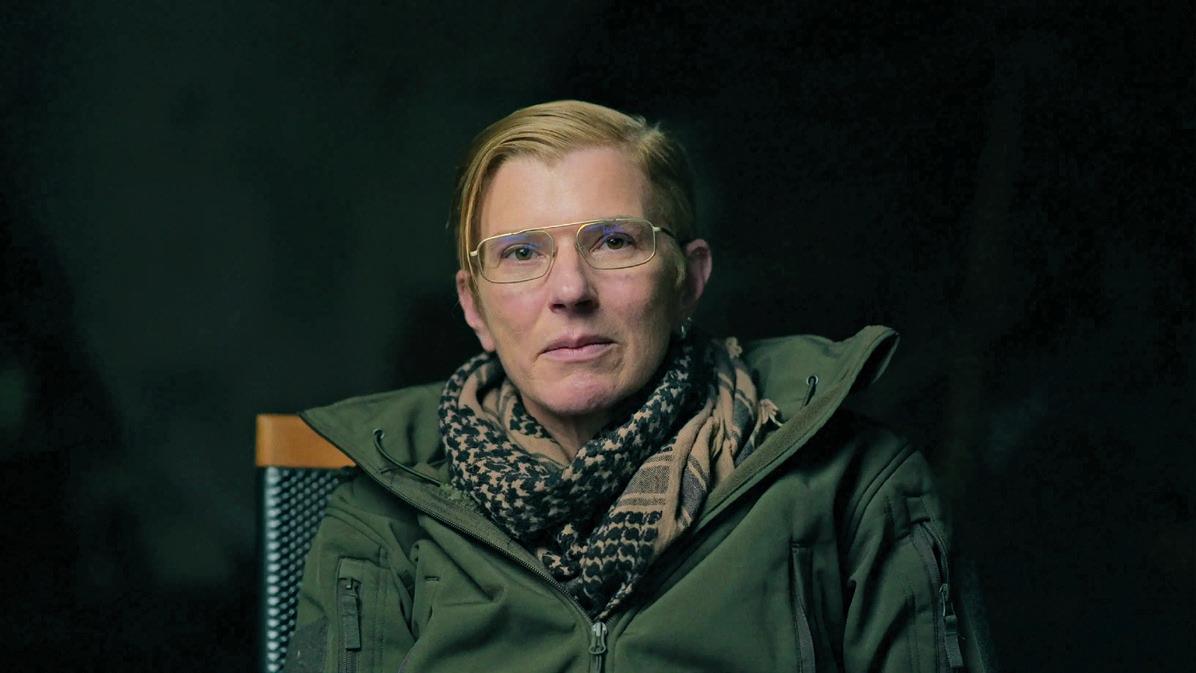
decried Harry’s most recent “attack” on the Royal family, referencing a line in the series where he says nobody helped him when he Afghanistan and that his life “unravelled” as controversy for not reaching Netflix’s top 10
It would have undoubtedly turned many Netflix subscribers off any new doco to do with the duke and the audience review score on IMDB for “Heart of Invictus” certainly reflects that – hovering at an average of 5.3/10. Perhaps it might have fared better had it come before “Harry and Meghan”.
The reception is ultimately a shame because the new documentary does have stories worth telling, stories that showcase the worst and best of humanity and that, if separated from Royal drama, might have taken the spotlight. In this columnist’s opinion it’s still worth a watch.
For those sick of seeing and hearing about Harry though there’s the bad news. This series is just the second of many more to come as part of the duke and duchess’ $US100 million deal with Netflix.
Over the coming years the couple want to create more docos, scripted series, feature films and even children’s shows that, in their words, will “inform, elevate and inspire”.
One has to wonder if a certain tendentious memoir may soon make it to the screen.
yet all have found redemption and triumph founding of “Taira’s Angels”, a volunteer Ambulance Corps serving amid the country’s conflict with Russia.
Two years ago Paievska secretly recorded more than 250 gigabytes of video which showed her medics providing care during
THE Rolling Stones have announced “Hackney Diamonds”, their first album of original music for 18 years and first since the death of drummer Charlie Watts, at the Hackney Empire theatre in east London.
Mick Jagger, Keith Richards and Ronnie Wood – the surviving core of the 61-year-old band – appeared on stage at the London theatre to discuss the recording, before the premiere of the video of single Angry, which features actress Sydney Sweeney.
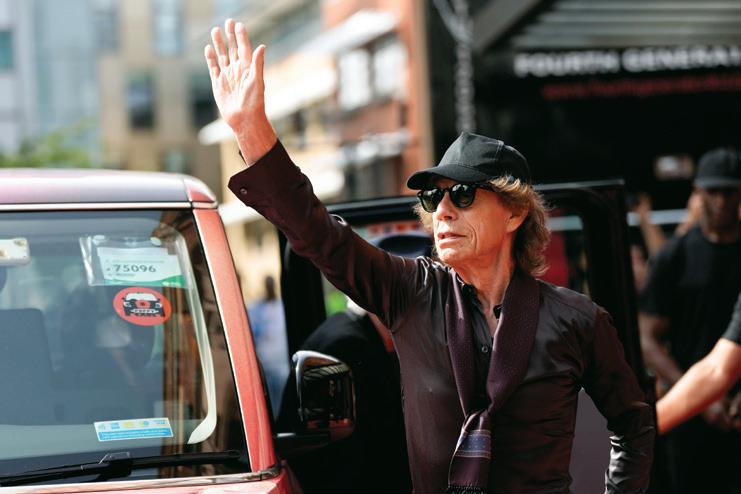
Frontman Jagger, 80, said the band were “pretty fired up” to record new music.
“Every day was kind of like banging through two or three songs, so you keep the excitement,” he said after the launch.
The album had a contemporary sound, with a mixture of rock, ballads, dance and a “country-ish kind of thing,” he said.

Richards, whose songwriting partnership with Jagger is one of the most enduring and successful in

rock, said Watts’ 2021 death had spurred the band to record new music.
“I think because of Charlie passing, we felt that we are still going and that we should still retain an identity and still say ‘Hey, it’s only rock and roll. But you know here we are’,” the 79-year-old said.
Former Stones’ bass player Bill Wyman, new drummer Steve Jordan, ex-Beatle Paul McCartney and Stevie Wonder were all involved in the album, the band told broadcasters.
Wood said McCartney, who played bass on one track, was “blown away” to record with the band, which rivalled the Beatles in its effect on rock music in the 1960s.



“You know, he was loving it,” he said.
Award-winner Andrew Watt produced the 12-track album, which was recorded in locations including London, Los Angeles and Nassau.


The recording, whose title refers to broken glass after a robbery, will be released on October 20.
The three Stones – all dressed in black – arrived in a London taxi decorated with the band’s tongue and lips logo. Jagger paid the fare in cash. –AAP
comparison to Harry and Meghan’s widelypanned series from late last year that racked worldwide.

IT’S not a restaurant. It’s not a café. It’s a wine outlet where you can buy French wines to sip on site with wonderful cheeses, olives, pates, drycured sausages, rillettes and more.

Close your eyes and let yourself be transported to France, with its incredibly rich culture that adores connecting food, people and place.
French Flair la Boutique in Manuka imports exclusive wines, ciders, spirits and liquors.

Since 2009, they’ve also been importing quality products from France and reputable Australian small producers who create with passion, pride and a blend of traditional practices and new technologies. These artisan products are lovingly made with the highest quality ingredients.

Supplying some of Canberra’s best restaurants, bars and retailers is a focus at French Flair, but so too is providing locals and visitors with an opportunity to sit outdoors in protected Palmerston Lane, around small tables and on bench seats with scattered, brightly coloured pillows.
High-quality and interesting wines – each with their own story – are sourced from regions such as Champagne, Beaujolais, Bordeau, Loire Valley, Provence, Rhone Valley and Savoie (check out the detailed map displayed).
French Flair holds periodic tastings sharing in-depth knowledge. Or you can buy a bottle (no mark-up), select some food and enjoy on site, which is precisely what we did.
We can vouch for all the rillettes and on one visit shared the decadent duck variety ($16) by Les Deux Cogs (Two Roosters), which specialises in French charcuterie smallgoods. Absolutely sen -

sational, these rillettes are made in Adelaide with French savoir-faire and they’re free of artificial colours, preservatives and additives. All rillettes, including the roast chicken and pork varieties are rich, decadent and inviting.
Also divine was the signature, smooth and delicate pâté, handmade by Little Acre Foods in McLaren Vale, also made with “French flair” ($17). This small-batch, ethical producer is devoted to sourcing locally. The pâté was rich and addicting, including with plain crispbreads by Cheese Culture. Memorable moments, indeed.
Our group also indulged in a selection of cheeses from the range curated by French Flair. The Roquefort Papillon (one portion, $20) featured generous streaks of intense blue. We savoured a portion of the Comté French Appellation d’origine
contrôlée (AOC), aged 24 months and made from unpasteurised cow’s milk ($23). Also with AOC-protected status was the Hervé Mons, known as a true cheese innovator (one portion, $23). Rosnay organic Kalamata olives were salty, crunchy and fruity ($11). The olives are even more special having been fermented over 12 months in a Murray River salt brine. Stunning dried sausage was ($14).

French Flair la Boutique also provides private tastings and masterclasses, on and off premises. At the end of our foodie session, we popped inside for a shopping spree, stocking up on all things yum.
THE wine media was in a frenzy over a recent Rabobank report that showed Australia has the equivalent of 859 Olympic swimming pools worth of wine in storage, causing headlines like: “Australia is Swimming in Wine”.
In fact, there are now more than two billion litres of wine, or over 2.8 billion bottles of wine, in storage.
This is a mixed result; not good for the industry but a boon for consumers with the surplus especially affecting red wine.
Economics 101: normally, when supply increases and demand doesn’t, prices go down. With high inflation levels grocery prices in particular have been rising, but that does not appear to be occurring for wine, one of my favourite groceries. The report’s findings show that a number of factors coincided to create a situation of oversupply.
Firstly, a matter I’ve commented on in previous columns: Chinese anti-dumping tariffs hit Australian exports in 2020/2021 with wine taking the biggest hit, losing about one third of export value from its peak in 2019.
Secondly, this tariff imposition coincided with an exceptional growing season and Australia’s largest crush on record. Wine production for the 2021 vintage increased 36 per cent year on year, which would have, in any case, caused an oversupply in Australia. That level of production has not, however, continued.

Wine Australia, the government body, has reported the harvest in the southern hemisphere is complete for 2023, with all the major wine producers having below-average vintages.
Australia, Argentina and South Africa have all had their lowest vintages for more than 10 years, while Chile’s vintage was also down (by 15 per cent) but this came after two above-average vintages in 2021 and 2022. Combined, production from these four countries is expected to be down by 23 per cent compared with 2022. Wine Australia has also recently reported that global wine production in 2023 will be below average for the fifth year in a row. That is the case, but global production is still expected to exceed demand by around 10 per cent, as wine consumption continues its long-term decline, the third major factor affecting Australia’s wine oversupply.
“Historically, Australian wine supply and demand have been well-balanced,” says Wine Australia.



“Over the past 16 years, total wine sales have exceeded production in the same year more times than the reverse.

“However, as we reported in the ‘Australian Wine: Production, Sales and Inventory Report 2021–22’, Australia’s wine production is now estimated to exceed sales, and stocks are above the long-term average.
“Global consumption of wine has been in decline for many years and this poses a challenge not just for the Australian wine sector. “According to OIV figures, with the exception of 2017, world wine production has exceeded consumption for more than a decade and this is a continuing trend.”
Wine Australia notes this decline in supply is a long-term trend. It says for 2022, global consumption decreased by one per cent compared with 2021 to be 23.2 billion litres, continuing a
steady decline from 24.6 billion litres in 2017, and more than 10 per cent below the peak of 25.0 billion litres in 2007. So, there’s a surplus building up even though there’s declining global supply.
I called Sarah Collingwood, CEO of Four Winds Vineyard, and asked her if these trends were affecting Canberra District wineries. She said: “I don’t believe that any local wineries currently export to China so the decline in that market has not greatly affected the region.
“The Canberra District is made up of microwineries, with the majority making wine from what we take off our own vines. Many of the local wineries sell directly to customers through their cellar doors and are making premium, cool-climate wine.
“Like many local vineyards, we lost the crop in 2020 to smoke taint and a smaller number of vineyards, including Four Winds Vineyard, lost the crop again in 2022 due to hail. The result of the loss of these crops and the boutique nature of the region means it’s unlikely Canberra District wineries have huge volumes of wine in storage.”
So, the national wine lake is hardly a puddle for local wineries.
On the first day, God created the sun. In response, the Devil created sunburn. On the second day, God created sex. In response, the Devil created marriage. On the third day, God created an economist. This was a tough one for the Devil, but, in the end, and after a lot of thought, he created a second economist.

18-24
ARIES (Mar 21 – Apr 20)
When it comes to professional or volunteer work, do you feel as if you’ve been going backwards? Prepare to take a welcome leap forward as the Sun, Pluto and Mercury move things in a positive direction. So don’t waste precious time procrastinating! Be upfront with work colleagues, clients or customers, and keep them up to date with current plans and changes. The more creative and proactive your approach with family and friends, the better the week will be.
TAURUS (Apr 21 – May 21)
Hey Bulls – are you making the most of Jupiter moving through your sign? The planet of good fortune is transiting through Taurus for another eight months, and then it won’t be back again for eleven years. So don’t rest on your lovely laurels! It’s time to turn dynamic opportunities into productive, prosperous projects. Ultimately, it’s up to you. Birthday great Bruce Springsteen (who turns 74 on Saturday) reminds us: “When it comes to luck, you make your own.”
GEMINI (May 22 – June 21)
On Tuesday, nebulous Neptune sucks the wind out of your sails (especially at home or work) and you may feel disappointed or confused. Don’t despair and give up, Gemini! Instead, get your creative juices flowing in imaginative new directions. Thursday’s Sun/Pluto trine focuses your busy mind and sharpens your cerebral talents. So it’s the perfect time to analyse, study, research and dig deep as you uncover a mystery or solve a perplexing problem.
CANCER (June 22 – July 23)
On Monday and Tuesday, resist the temptation to retreat inwards (and be moody and mysterious) to cover up your emotional insecurities. Clear and honest communication (with yourself and loved ones) will get you a lot further than sulky Crab behaviour! And are you overdue for some creature comforts and a touch of luxe? With Venus visiting your money zone, raid your piggy bank and treat yourself to a restaurant meal or some indulgent body pampering.
LEO (July 24 – Aug 23)
There’s the tendency to become obsessed about an idea (or person) as you focus with Leo tunnel-vision. You’re putting in 100% effort but don’t be disappointed if the results aren’t perfect. You’ll learn more from perceived ‘failures’ than you will from successes. Draw inspiration from film star Sophia Loren (who was born on September 20, 1934): “It’s better to explore and make mistakes than to play it safe. Mistakes are part of the dues one pays for a full life.”
VIRGO (Aug 24 – Sept 23)
With Mercury and the Sun visiting your sign this week, you’ll find brains and confidence are a winning combination. It’s also a wonderful time to boost your self-esteem with a physical makeover, tap into your latent talents, and believe in yourself – even when other people disagree with you and the going gets tough! So your motto for the moment is from Virgo actress Jada Pinkett Smith (born on September 18, 1971): “Don’t allow anyone to dictate who you are.”
LIBRA (Sept 24 – Oct 23)
This week is all about bringing more balance and harmony into your busy world. We celebrate the Equinox on Saturday – when the Sun transits into Libra, and day and night are of equal length. With Mars also moving through your sign, it’s time to tap into your passion and creativity. So your motto is from fellow Libran, legendary stage actress Sarah Bernhardt: “Life begets life. Energy creates energy. It is by spending oneself that one becomes rich.”
SCORPIO (Oct 24 – Nov 22)
The magnetic Sun/Pluto trine boosts personal power and encourages passionate communication and purposeful transformation. But the overall message this week is patience, as Mars (and then the Sun) transit through your solitude zone. Rest, relaxation, reflection and rejuvenation are just what the doctor ordered. If you look to the future with a positive attitude, then fabulous opportunities will manifest –eventually. But you must be extra patient.
SAGITTARIUS (Nov 23 – Dec 21)
You love to hear the sound of your own voice as you chat, converse and communicate. However, sometimes you can confuse talking about something with actually doing it! If you think things through and then act with passion and purpose, the week will go well. But if you don’t walk your talk, expect delays and disappointments at every turn. Be inspired by music legend (and birthday great) Bruce Springsteen: “Talk about a dream and then make it real.”
CAPRICORN (Dec 22 – Jan 20)
Early in the week you could feel doubtful or disappointed, as the Sun/Neptune opposition dulls motivation and confuses communication. Then your Capricorn confidence starts to return, as the Sun/Pluto trine boosts your earthy energy and natural enthusiasm. Personal projects, holidays, travel and education are highlighted. Remember it’s Equinox week so the more you relax and tune into your inner equilibrium, the more productive (and attractive) you’ll be!
AQUARIUS (Jan 21 – Feb 19)
An unreliable relative or a questionable acquaintance could lead you astray. So keep your realism radar set on high and avoid getting caught up in dubious schemes. You’re learning some hard financial lessons, as penny-pinching Saturn stirs up your money zone. Astute Aquarians will budget wisely and prioritise saving over spending. Strive to build your outer material security – as well as your inner emotional security. Both are equally important to future success.
PISCES (Feb 20 – Mar 20)
If you daydream the week away, you’ll just end up feeling dazed and confused. Try channelling your creative energy into relationships, joint ventures, group projects or helping others. When it comes to a partnership, you’re keen to pursue a particular course of action but is a loved one on the same page? Take the time to double-check, otherwise you could find you are veering off in completely different directions. Communicating clearly is the key.
Copyright Joanne Madeline Moore 2023Across
1 Viticulture is the cultivation of what fruit? (6)
8 Name a renowned harness racer, ... Adios. (8)
9 Name one of the seven dwarfs. (6)
10 In which US State is Chicago? (8)
11 Which term describes an acquired male offspring? (6)
12 Which peninsula lies in Arnhem Land? (4)
13 What is a knotty protuberance on a tree? (5)
16 What are cormorants also known as? (5)
19 To be in a state of wonder and amazement, is to be what? (4)
21 Which term describes that which is ingenious? (6)
22 To be free from commotion or tumult, is to be what? (8)
23 Name a particular woodwind instrument player. (6)
24 What are tabular surfaces of high elevation? (8)
25 Name the units of inductance. (6)
2 What was the former name of Myanmar's capital city? (7)
3 What do we call one who forces wool into bales, etc? (7)
4 Sidney Reilly earned a living doing what? (6)
5 Name animals of the cat family. (7)
6 What is a cylindrical rocket-launcher? (7)
7 Name a particular temperature scale. (7)
13 Who were the secret state police of Nazi Germany? (7)
14 What is a calendar of the days of the year? (7)
15 Name a resinous varnish. (7)
17 Which barbed, spearlike missile is used in catching whales? (7)
18 To speak or act against, is to do what? (7)
20 Which piece of leather runs round the lower part of a shoe's uppers? (6)




My nonagenarian client, Tim, wants to close his SMSF. "I can't see any point in hanging on to it. I have to do a fair bit to keep it going," he told me.
I wasn't so sure. “Tim, there are a number of reasons why I think you should keep the SMSF [self managed superannuation fund] going for a while longer," I countered.
"The first one is that you are ideally situated tax wise. You have about half your assets in your SMSF and half in your personal name. This strategy means that your tax is well minimised taking advantage of the low tax rates in both the SMSF and personal name.
"Consequently, you're in a better position than you would be if your assets were held in one or the other. I appreciate that you are 90 years old and that it could be getting a little stressful for you. However, there are considerable tax savings with your current structure.
“If you were to sell all the shares in your SMSF my calculation is that this would cost you more than $10,000 in additional tax each year. Even allowing for the fees you pay for administration you would be in a much worse position.”
Tim said: “Well Gail, as you put it like that it does make sense to leave everything as is.”
I replied that the reason for this was that the money in his SMSF, as opposed to in his own name, had an income tax rate of 15 per cent on most of your transactions and on capital gains the rate was 10 per cent.
"This compares to your marginal tax rate which is currently 39 per cent and the capital gains tax rate is 19.5 per cent," I said. "This means that the amount of tax you would pay in your personal name is clearly a lot higher.
“However, I neglected to mention that one of the other advantages for you to keep your money in your SMSF is that the funds are classified as tax-free, which means after your death the funds pass to your heirs and successors without any tax being payable.
"Super is normally outside your estate when it passes to your beneficiaries. There is no tax payable on items held in your own name when you pass. So your outcome is a result of good tax planning in earlier years.”
Fast forward five years I sat down with Tim again. He is now 95 and I wanted to discuss his SMSF, which I had been keeping an eye on for the last five years.
“Tim, the time's come where you can wind up the SMSF and transfer the assets to your name because the balance in the fund has reduced," I said.
"This means the tax payable has reduced and it’s not going to cost you more than you currently pay in tax in the SMSF, taking into account your fees for keeping it going. So now's the time to wind up the fund.”
Tim said he hadn't realised that the time was ripe for change and agreed to wind up the fund.
If you need help with any tax or SMSF matter contact the experts at Gail Freeman & Co on 02 6295 2844.
Disclaimer
This column contains general advice, please do not rely on it. If you require specific advice on this topic please contact Gail Freeman or your professional adviser. Authorised Representative of Lifespan Financial Planning Pty Ltd AFS Lic No. 229892.

